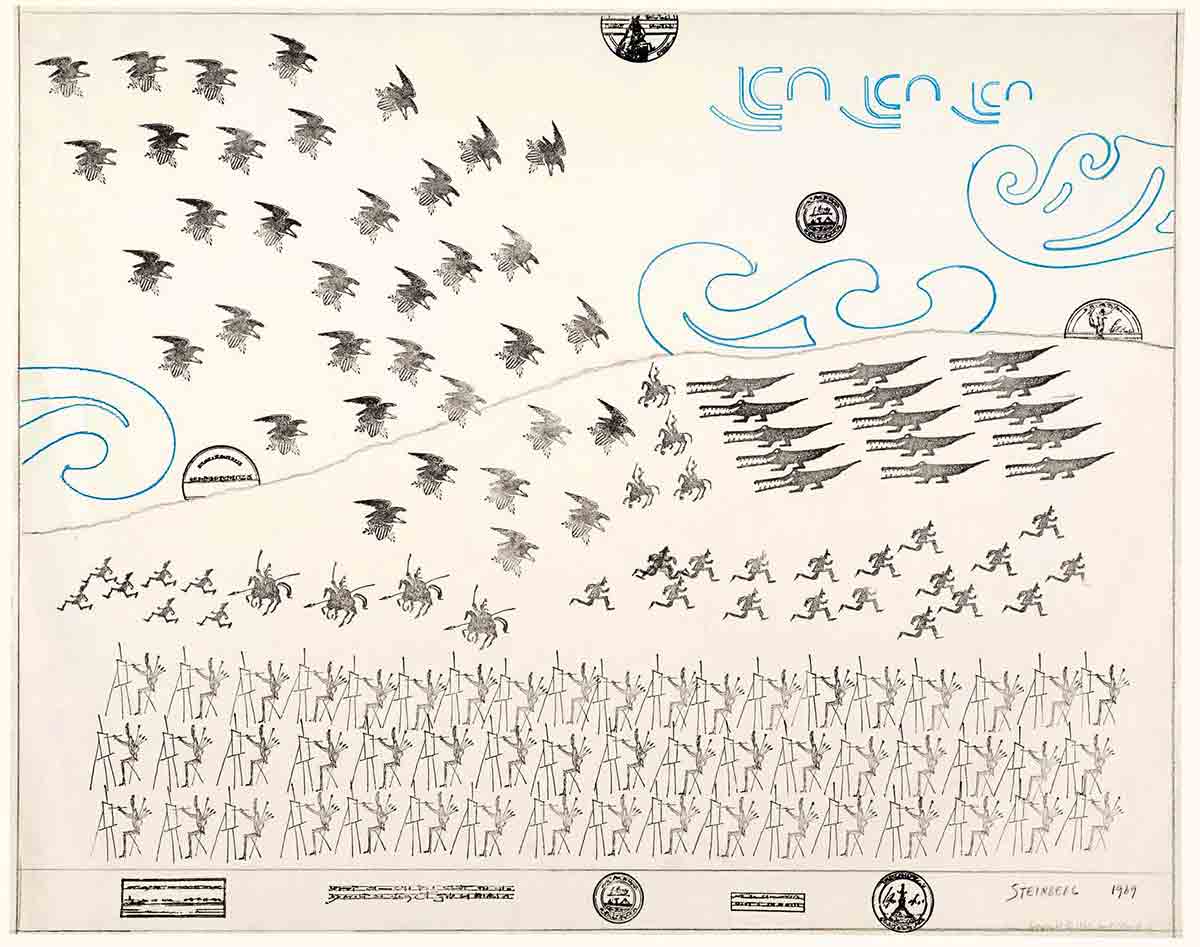Sections
1960
February 14, “The Stamp of Steinberg” airs on CBS-TV as part of its experimental Camera Three series, followed by a screening at The Museum of Modern Art, New York. The episode has shots of ST drawings from his books accompanied by distorted music and absurdist recitations.
ST and Hedda separate; never divorced, they remain close friends for the rest of his life.
April-May, sails to Paris. Visits sister, Lica Roman, and her family; early May to Nice to visit parents, then on to Rome for a few days before returning to Paris. Flies back to New York on May 15.
While in Paris, purchases a house for the Romans in the Paris suburb of Cachan.
June 15, signs lease for an apartment at 3 Washington Square Village, one of four newly constructed modernist hi-rise buildings in Greenwich Village.
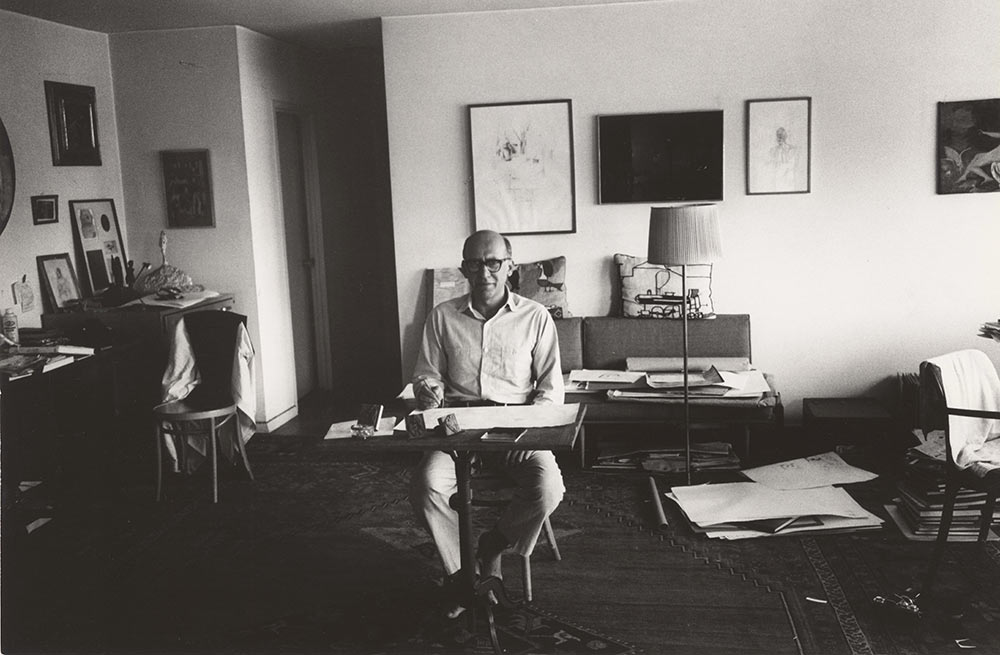
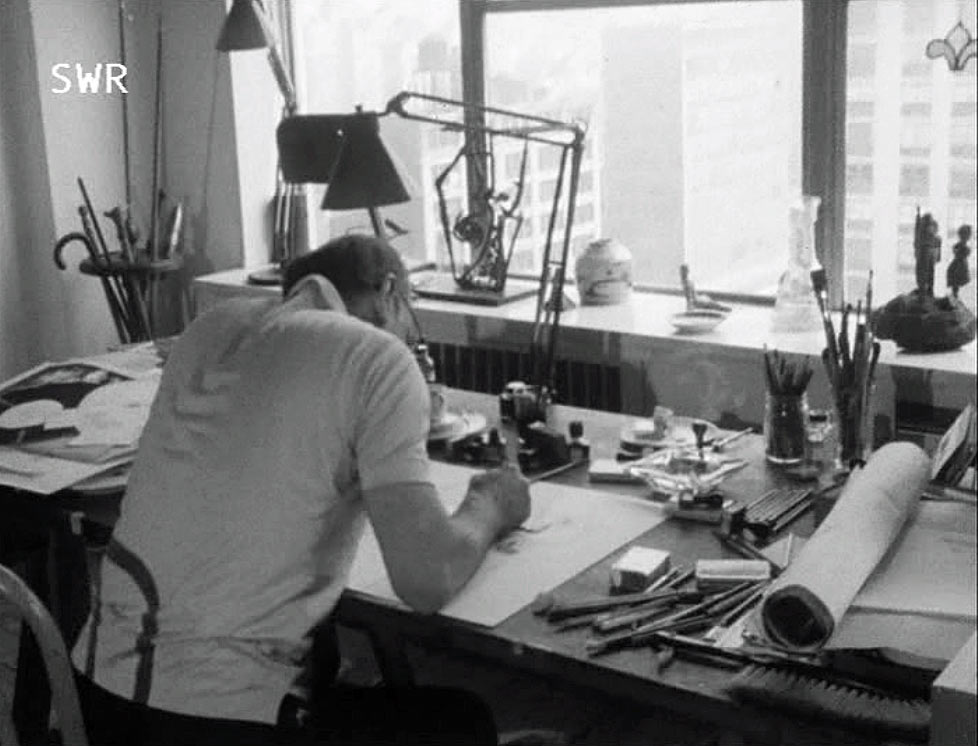
Around July, meets Sigrid Spaeth (1936-1996), a German design and photography student working in New York. Although the relationship is sometimes troubled, they remain partners until her death, though often live apart.
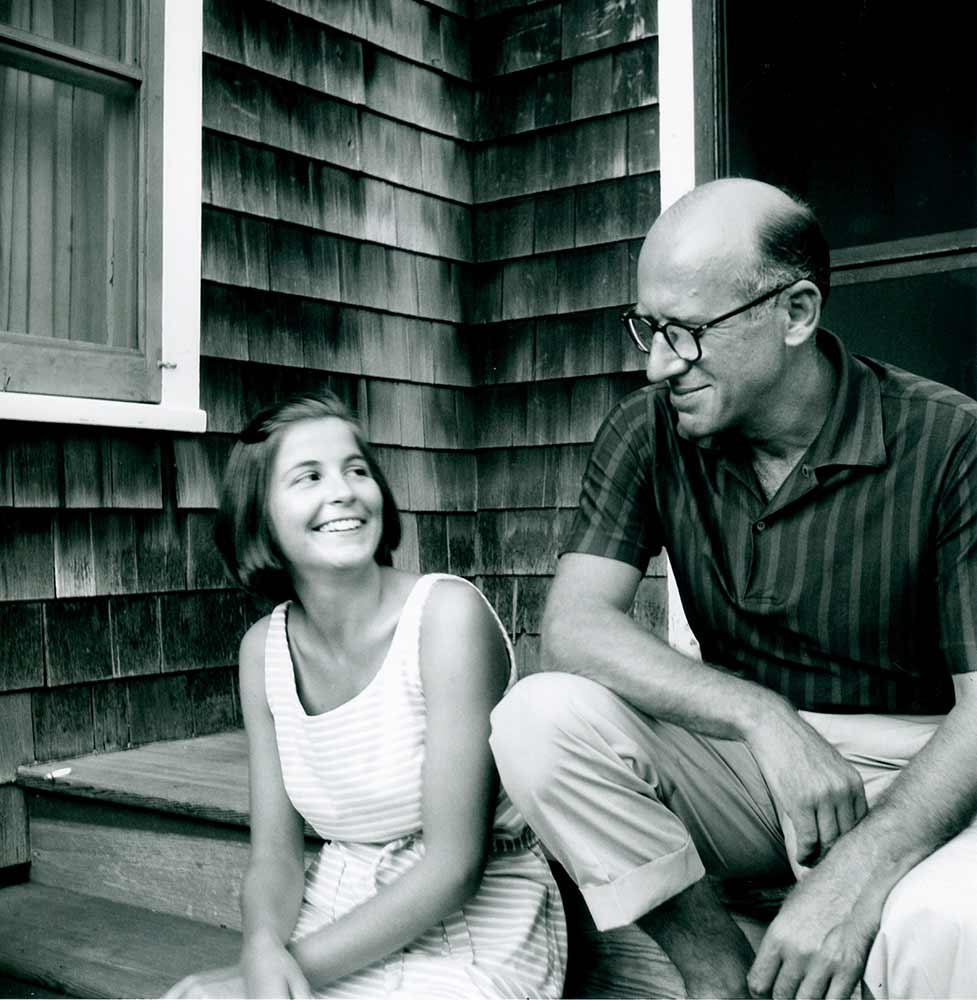
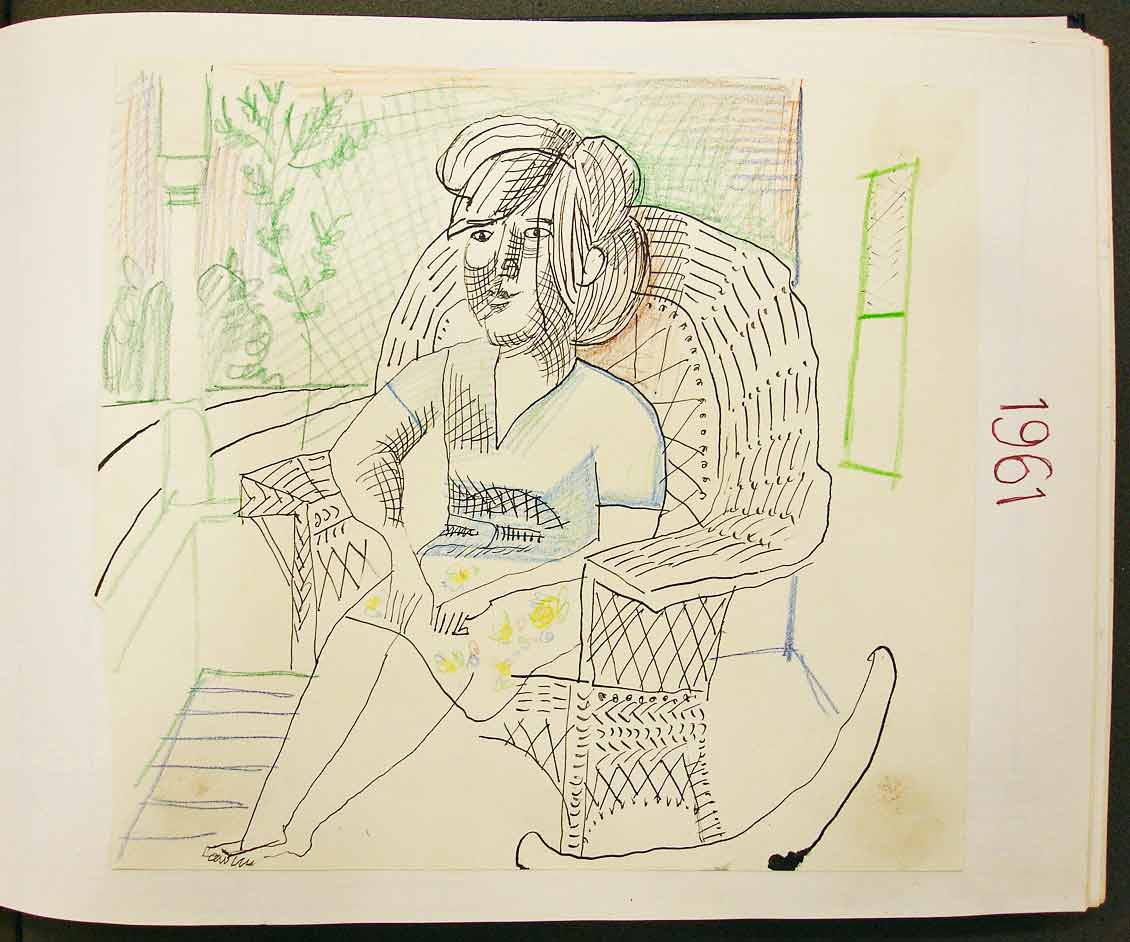
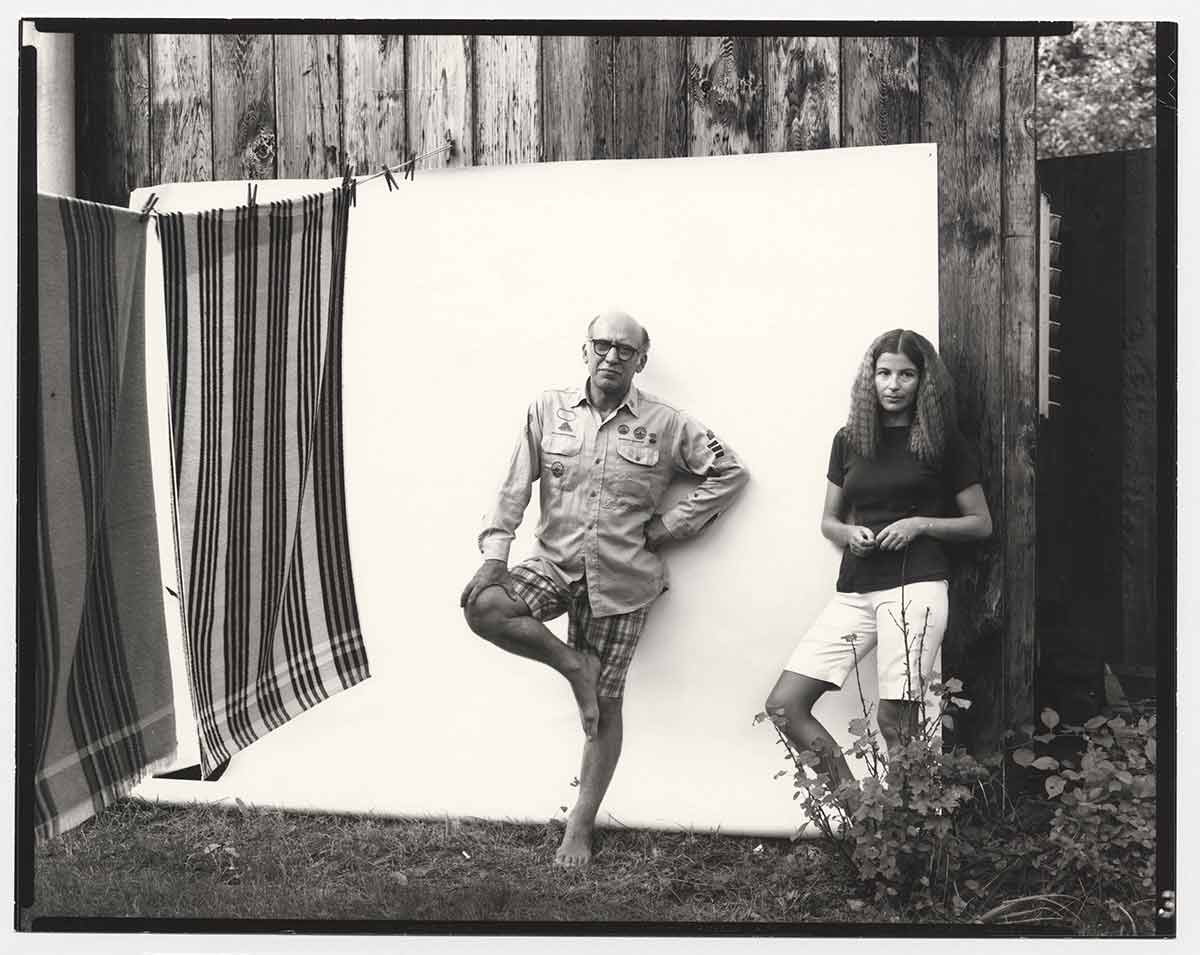
July 30, his father, Moritz Steinberg, dies in Nice. His mother, Rosa, moves to Paris to live with Lica and family.
December, publication of The Labyrinth, his fourth compilation of drawings. ST sends a copy to Le Corbusier, who responds: “You draw like a king. The dignity that cloaks your trenchant jokes makes you unique.”
At about this time, ST’s art as well as his personal life undergo significant change, as he gives up nearly all commercial and magazine work to concentrate on drawings for The New Yorker and gallery exhibitions. His art takes on a more intellectual tone.
Late 1960-early 1961, shaves off his trademark mustache, which gives him a more American look. “There was great consternation when I shaved off my mustache. I suddenly made people use their eyes again. They didn’t want to look; they had an image of me and they were content with it.”
1961
May, in Paris with Sigrid; June, in Rome, Venice, and Milan. By mid-June, back in New York, and by July with Sigrid in the Amagansett house. Receives word that his mother’s health is declining.
August, buys a 1953 Chevrolet Bel Air for driving in the country; he loves the car and over the years tries to keep it in good repair.
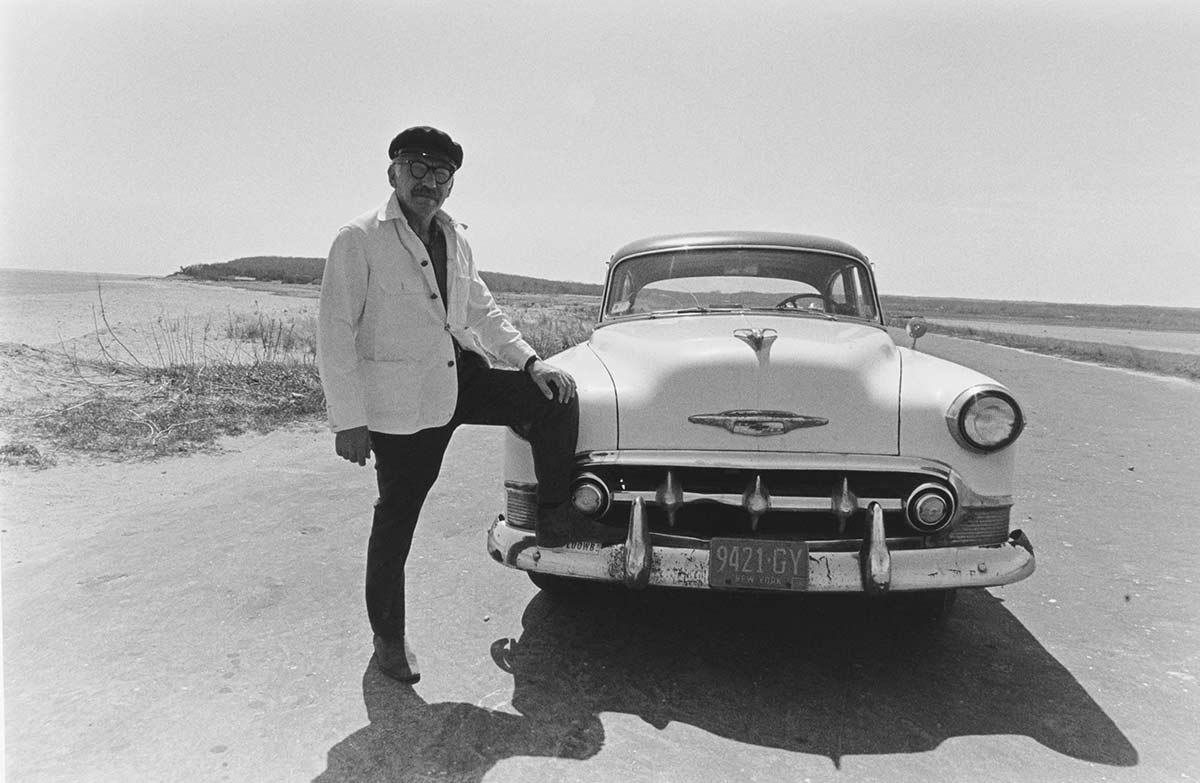
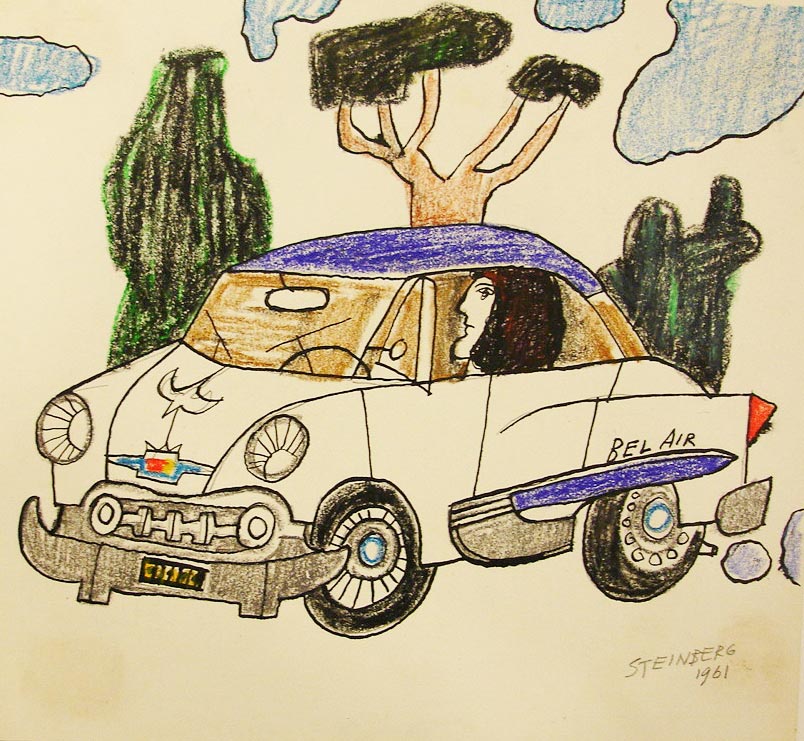
October 8, Rosa Steinberg dies in a Paris hospital.
November 26, goes to Paris, then to Milan in early December for his last mural commission: the sgraffito decoration of the entryway to the Palazzina Mayer, 5, via Bigli. The palazzina is being renovated by the firm of BBPR, which commissioned ST’s sgraffito drawings for the “Children’s Labyrinth” in 1954. One section shows multiple views of the Galleria di Milano, which ST had drawn in 1951. The murals are destroyed in 1997 when the palazzina is sold.
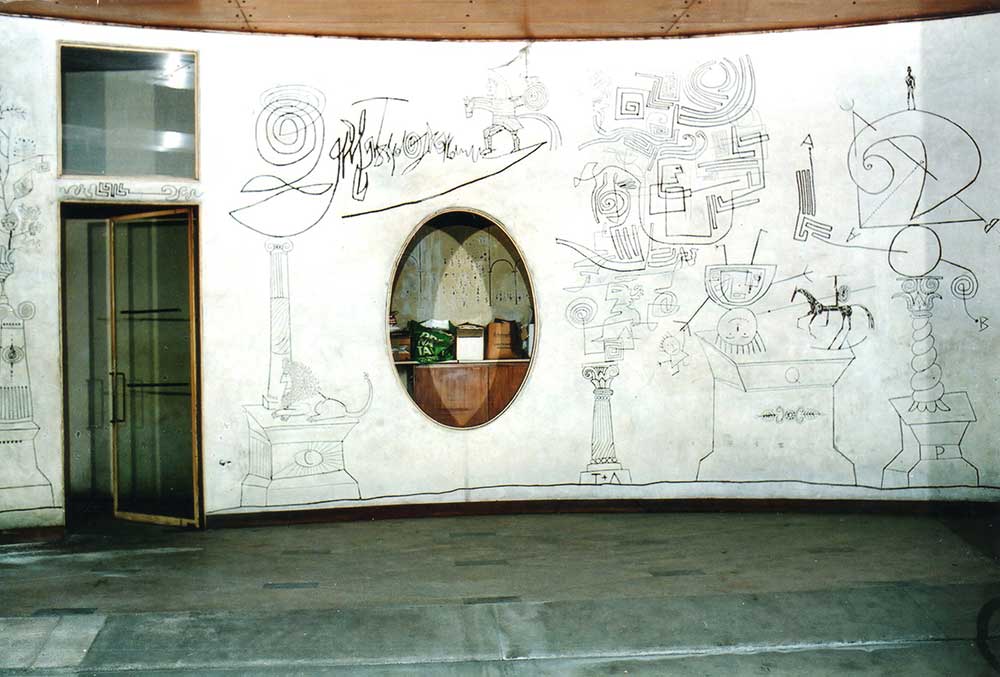
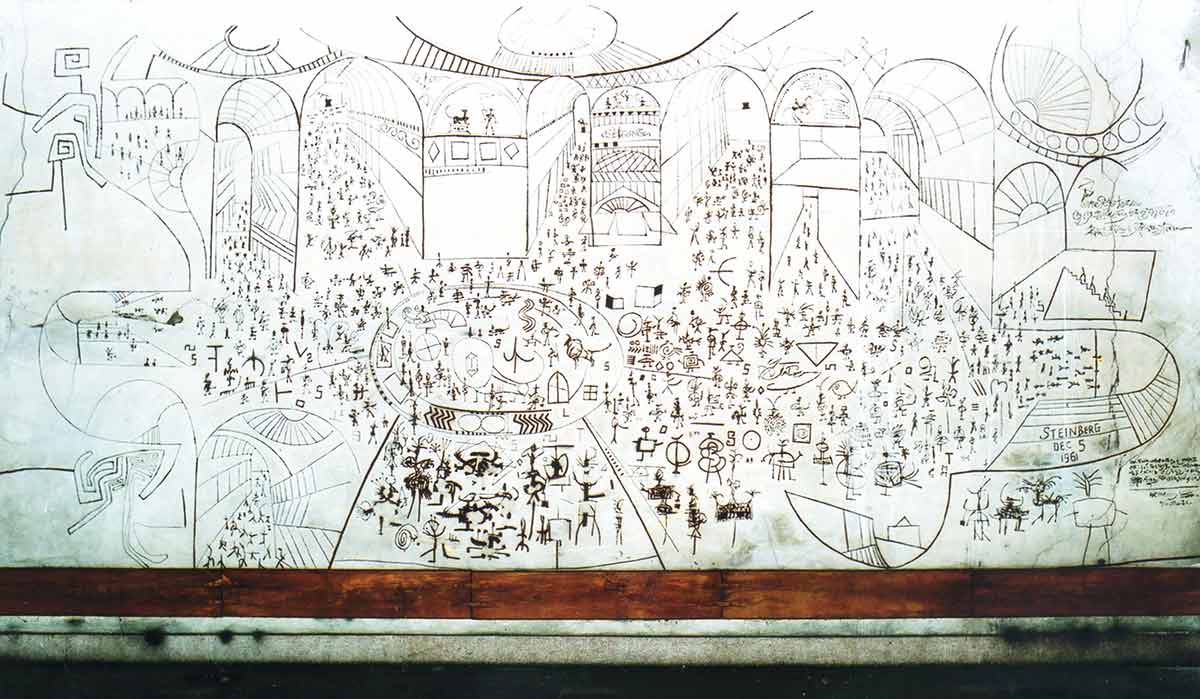
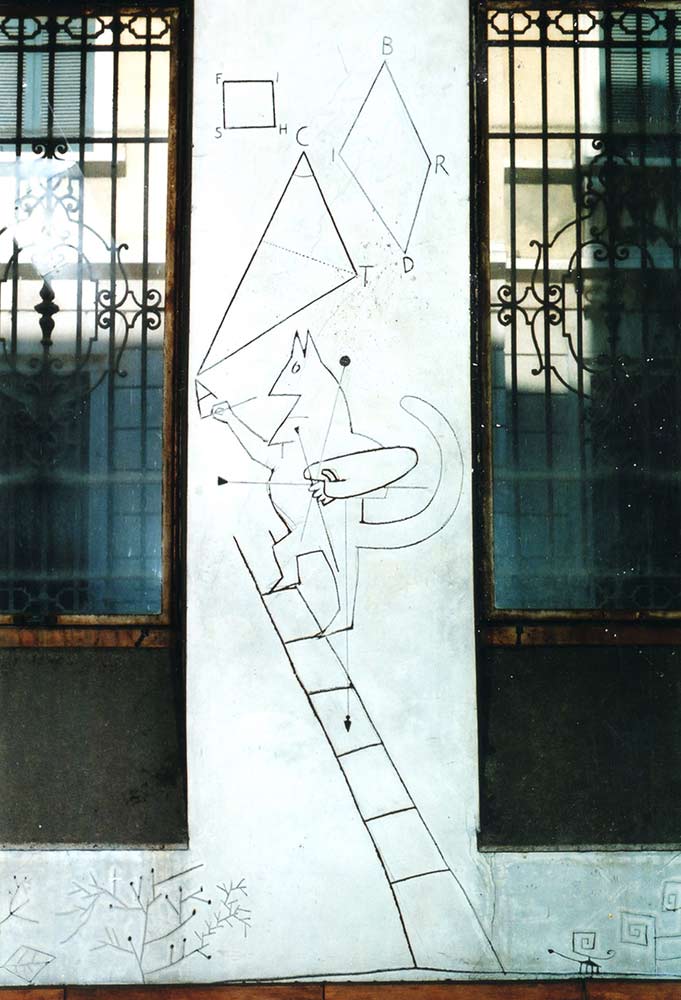
1962
June 10, awarded an honorary doctorate from Lawrence College, Appleton, Wisconsin—the first of several honorary degrees received over the next 30 years. “Your reality,” the citation reads, “is the crooked mirror where we find ourselves distorted into truth.”
September, in Italy. October 1, arrives in Tel Aviv for a week’s sojourn in Israel; his first trip there. “I discovered the beauty of the place, the poetic, romantic part, etc. of the ancient, medieval, Turkish, Arabic, Romanian places, the sea, the odors and perfumes….I also found people I could talk to immediately in the most subtle way.”
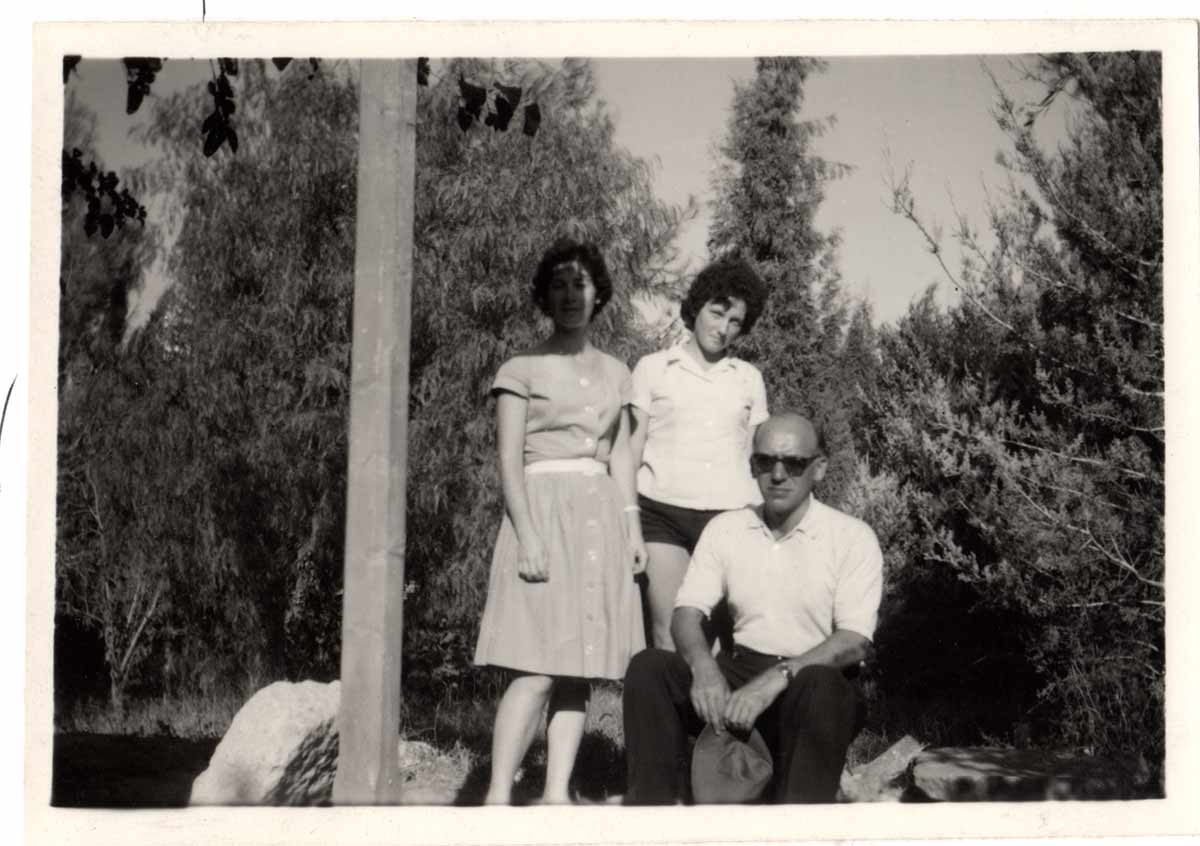
November 20 – December 16, “Saul Steinberg and Paul Klee: An Exhibition of Drawings,” The Art Gallery, University of California, Santa Barbara. ST’s art has often been related to that of Klee and Klee has been cited as an influence on him. A few years after this exhibition, ST tells an interviewer: “Klee? That’s what the experts say. But Klee and I were subjected to the same influences. I am much the same sort of artist; we are of the same family. But there is no direct influence. I drew my way before I ever saw Klee.”
Publication of The Catalogue, an anthology of drawings from ST’s four previous compilations.
1963
Becomes increasingly close to art critic Harold Rosenberg, who begins writing for The New Yorker this year. Of their visits in Amagansett, where they were neighbors, ST says: “It was a daily symposium, and we had no hecklers, and no interruption.”
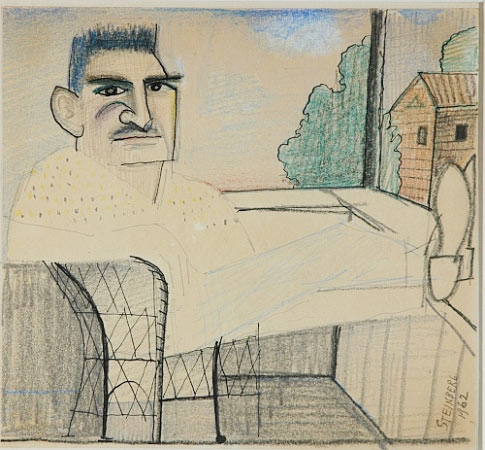
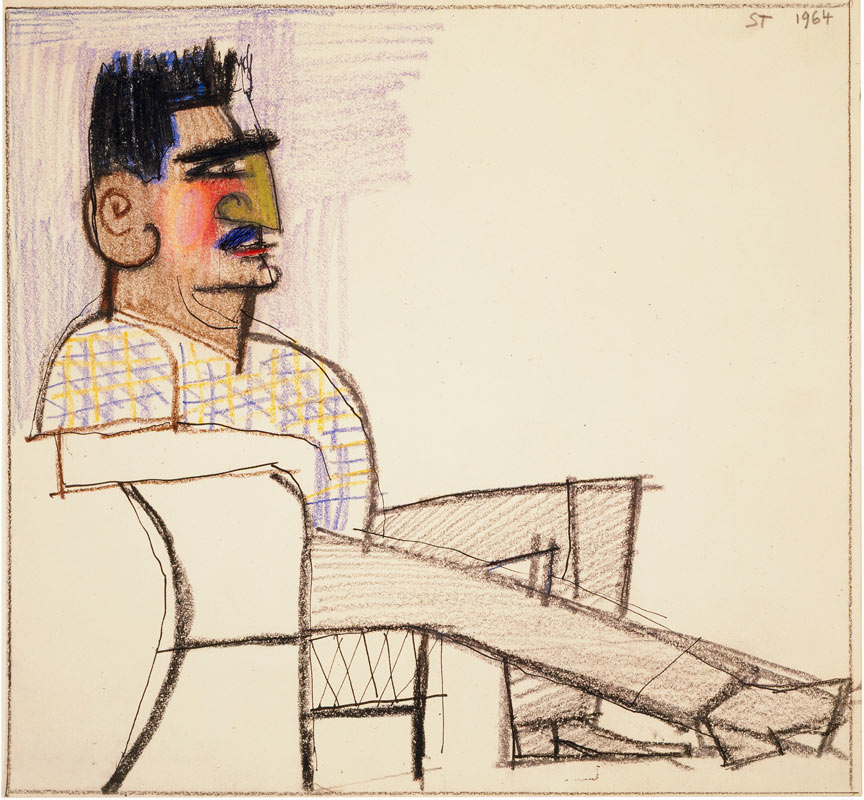
February, in Key West with Sigrid. He describes it as one of those “very beautiful and hot places almost all ruined by trashy architecture and amusements of the rich, as on the Riviera. But there are always large deserted beaches and one can spend hours watching the pelicans fish.”
December 8, flies to Paris for the beginning of a round-the-world trip (through c. January 20, 1964). After visits to Milan, Florence, and Rome, arrives December 22 in Athens. Will then proceed to Cairo, Asmara, Addis Ababa, and Nairobi.
1964
New Year’s Eve in Bombay, followed by visits to Calcutta, Bangkok, and Hong Kong. Arrives in Tokyo, January 6, spends two weeks visiting cities in Japan, then flies back to New York.
Steinberg’s Paperback published, a German compilation of drawings from ST’s previous books.
April 29, writes to Aldo Buzzi about his current work: “Now I’m doing collages,… and in a natural way I’m rediscovering cubism. These drawings are jokes about art history and the conventions of drawing, still lifes representing not objects but elements of drawing and painting combined with ‘speech balloons’ placed on the tables of still lifes. They are a mix of things said and things seen or done.”
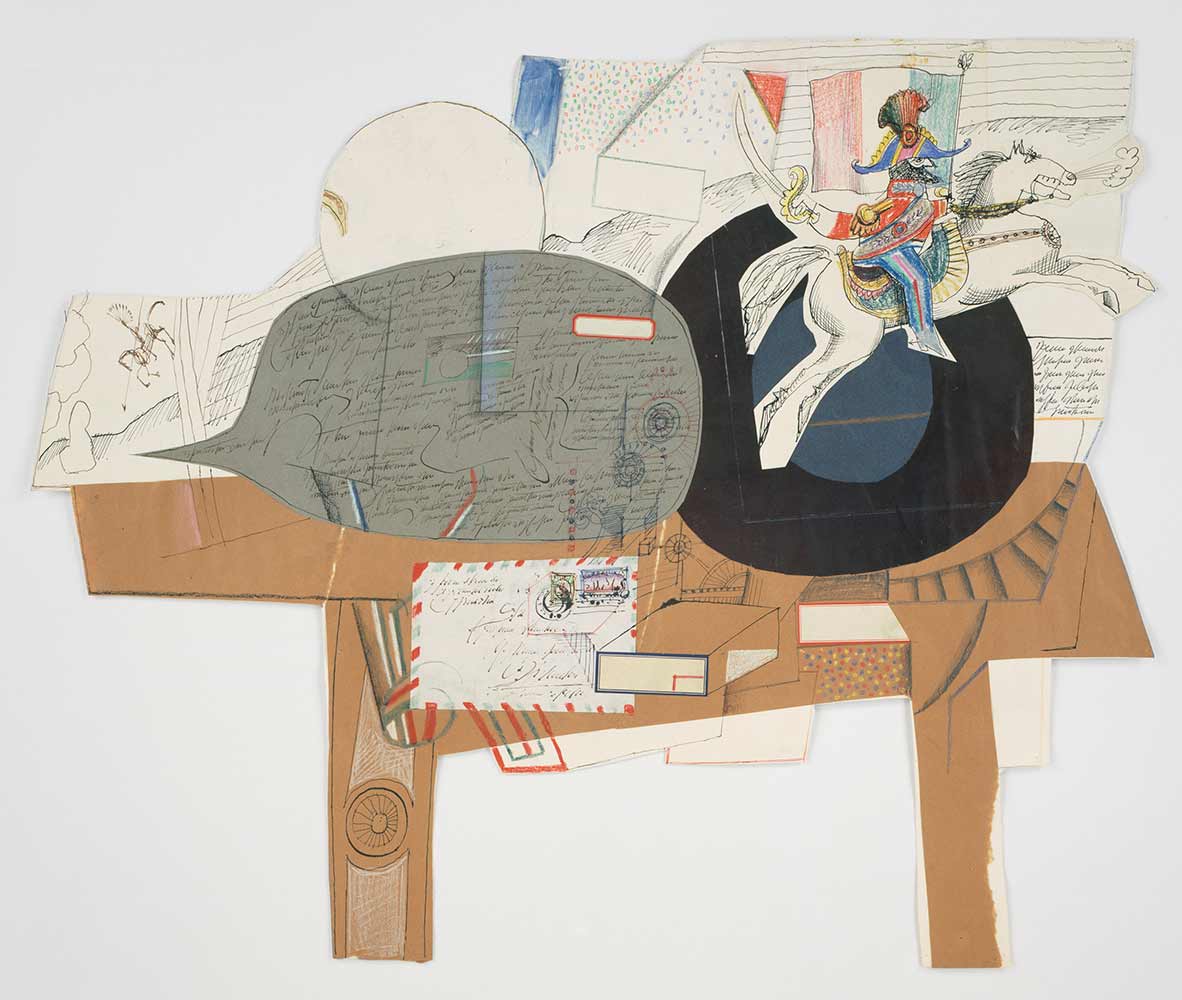
August, with Sigrid, makes a road trip through the Midwest and Southwest. Begins in Wheeling, West Virginia, on August 4, then drives to Ohio, Iowa, and Wyoming, where he visits cousins in Cheyenne; on to Colorado, Arizona, Texas, Mississippi, and Georgia. “Between Utah and Arizona,” he tells Buzzi, “there’s Monument Valley, the red desert of the Navajos, maybe the most beautiful and fearful part ever seen. Indian villages—beautiful names: Tuba City, Kayenta (probably Caliente), Mexican Hat. They’re frightening because they’re in America. There’s an air of the concentration camp on the reservations.”
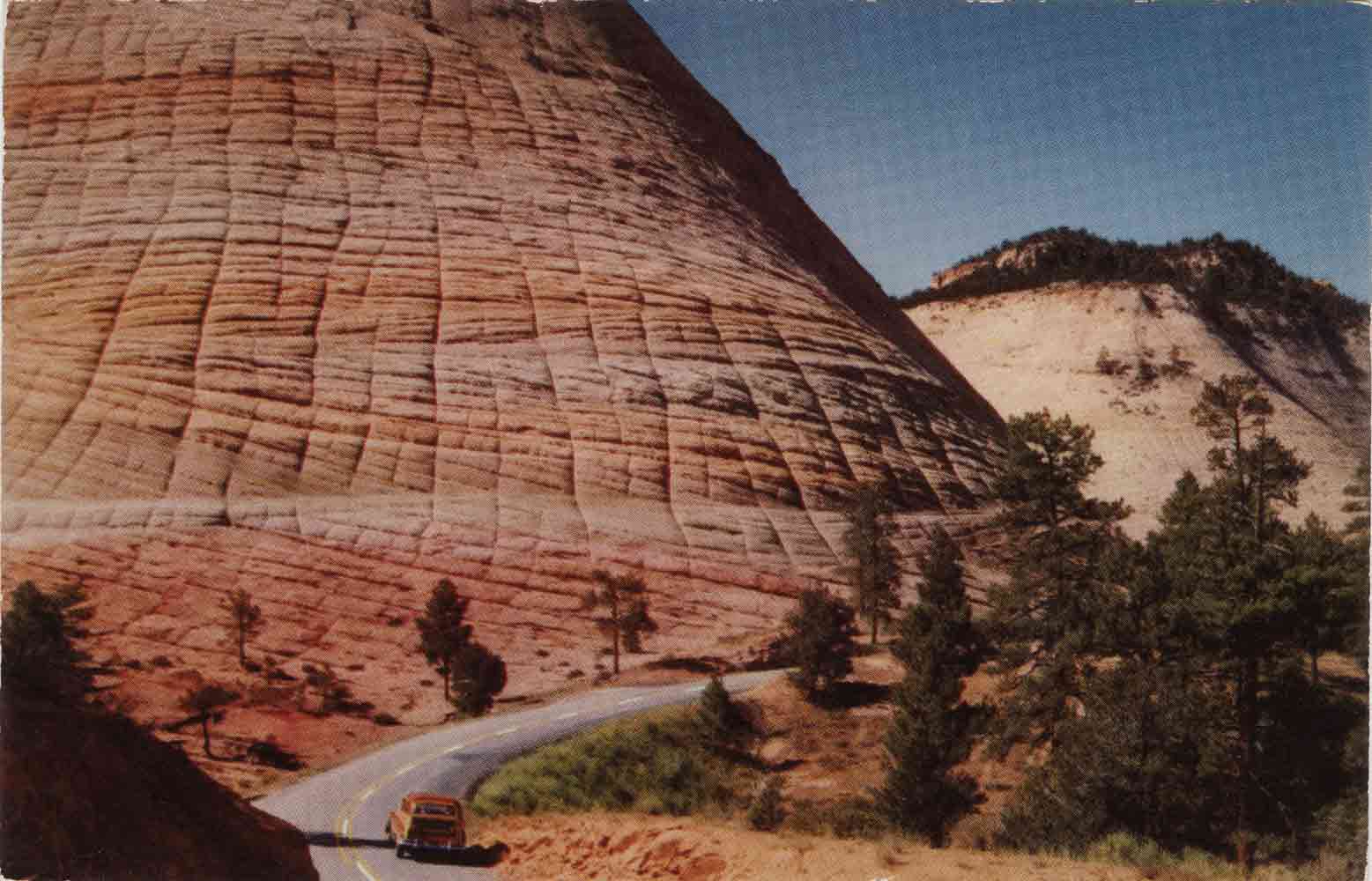
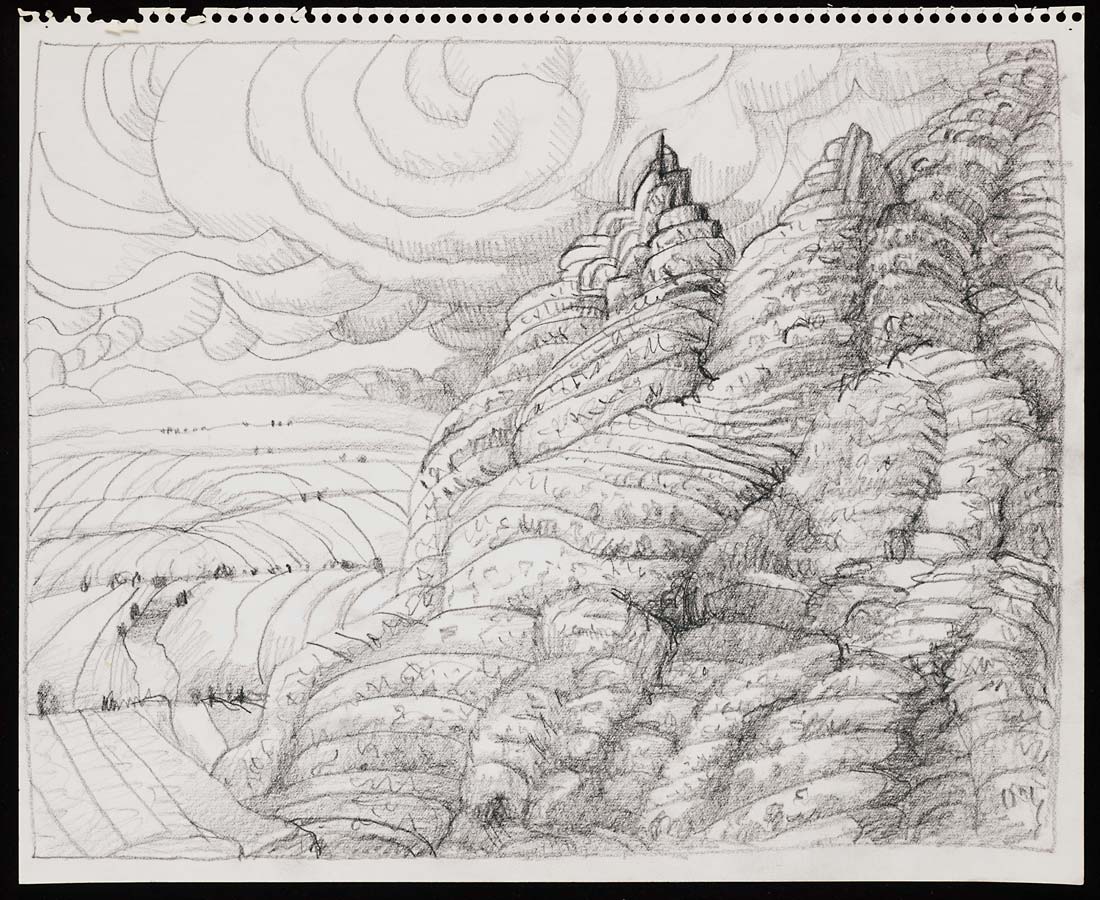
1965
January 27-February 1, trip to Santo Domingo, St. Thomas, and Puerto Rico.
February, in Paris. Begins working with the Galerie Maeght on Le Masque, a book planned to accompany ST’s exhibition at the gallery the following year. Makes brief trips to Rome and London.
March, NASA invites him to watch the launch of a Gemini rocket at Cape Kennedy (now Canaveral). “They invited me to inspire me! The frightening thing was the roar of that monster.” No specific images result, but rockets begin to appear more frequently in his subsequent art.
July 12, takes “a tiny dose of LSD” and spends “a day of such happiness that the memory of this possibility existing in me makes everything else unimportant, reduces miseries to their proper scale. It’s something very important that can change the meaning of life.”
October, publication of his fifth compilation of drawings, The New World, originally titled Confessions.
Around this time, meets the Bulgarian-born Christo, then newly arrived in New York with Jeanne-Claude. A lifelong friendship begins. “Christo and I are our own grandfathers in the sense that we made the transition from Eastern to Western men abruptly….I admire Christo as an artist who invented himself…his art…[and] his public.”
1966
February 16, flies to Paris to prepare for his show at the Galerie Maeght. Stays first in a hotel, then in the vacant apartment of Inge Morath and Arthur Miller. A month later, Sigrid joins him for part of his stay.
March 25, opening of “Saul Steinberg” at the Galerie Maeght. In addition to hanging drawings, ST makes a wall-size installation of cut-out figures—brown paper, linen, canvas—representing art world viewers. The book Le Masque is published, with color reproductions of drawings, most from 1964-65, paper-bag masks, and some of Morath’s photos.

The Galerie Maeght exhibition is his first major show in Europe in a dozen years. He writes to Aimé Maeght: “As you know I avoided exhibitions for many years and I worked in a way that gave me privacy and I forgot the nuisance of daily art historians.”
March 28, goes through the Louvre with French art historian Pierre Schneider. His comments on works of art are published by Schneider as “Steinberg at the Louvre,” Art in America, July 1967. “Art is a sphinx,” ST says. “The beauty of the sphinx is that you yourself must do the interpreting….The mistake people make is to believe that the sphinx can give only one answer. Actually, it gives hundreds of answers, or maybe none at all. Interpretation probably does not give us the truth, but the act of interpretation saves us.”
Begins having rubber stamps made after his own designs instead of using store-bought stamps.
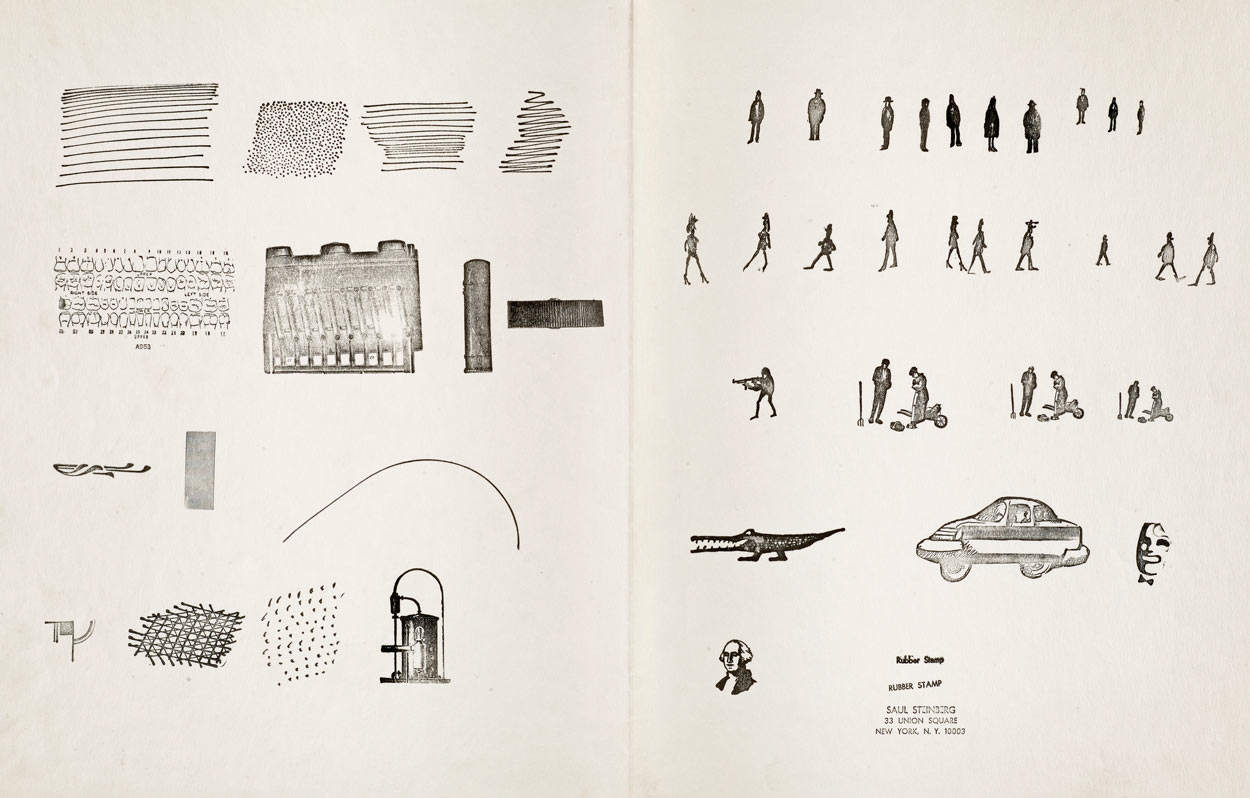
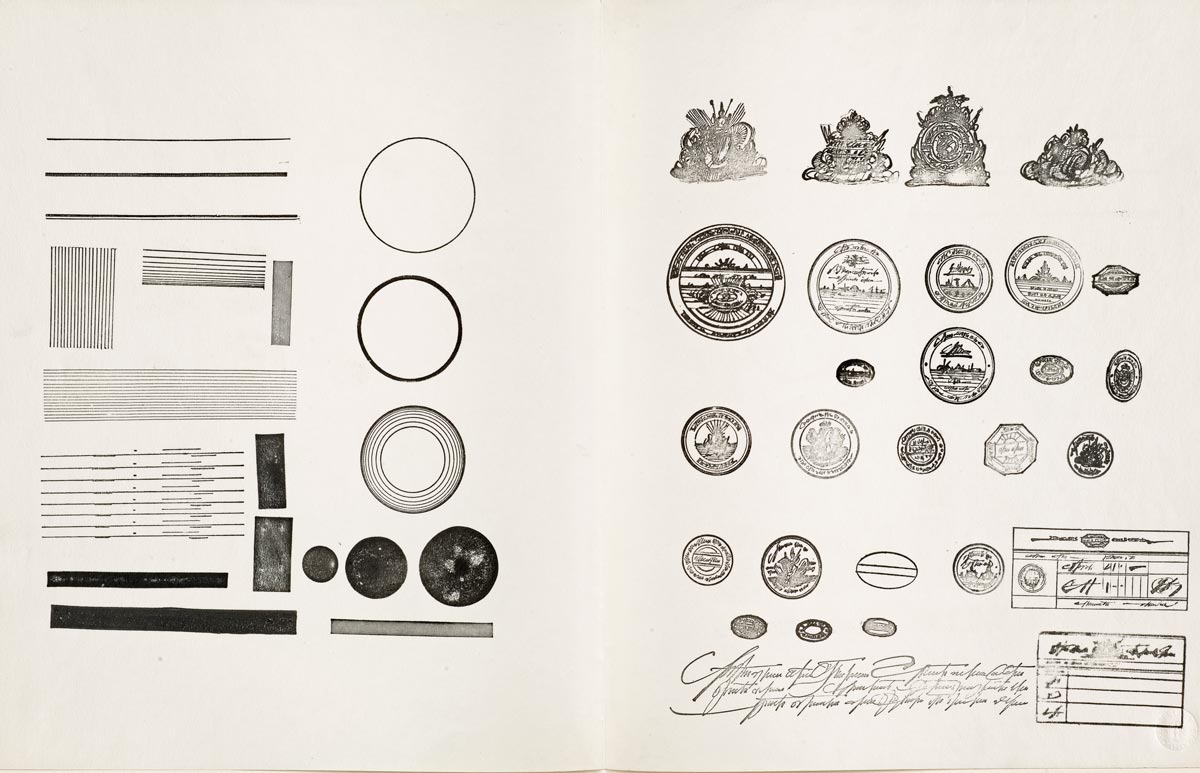
Now starts to spend more time in Amagansett. Develops a coterie of friends there, including Willem de Kooning.

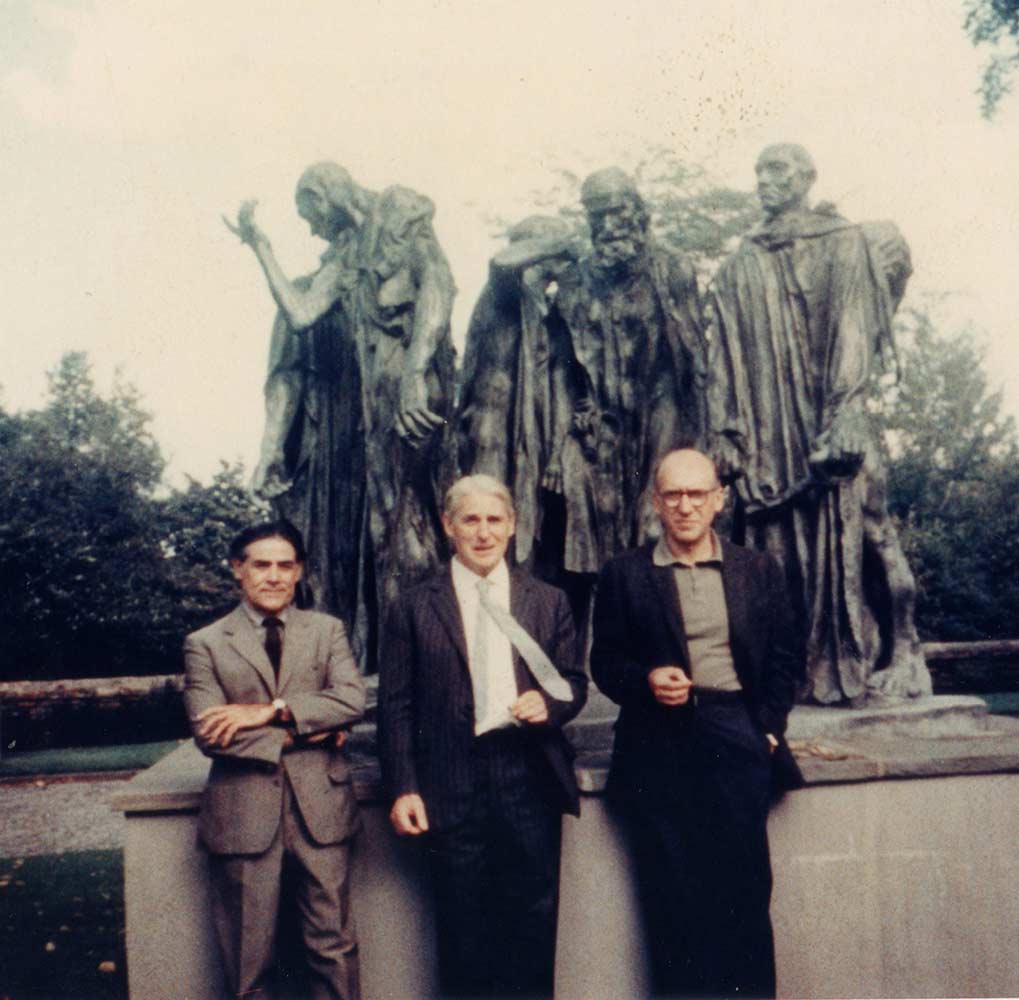
September, awarded medal, Chevalier de l’Ordre des Arts et Lettres, by the French government.
November, spends the day at the home of Inge Morath and Arthur Miller in Roxbury, Connecticut, along with John Updike and visiting Russian poet Yevgeny Yevtushenko.
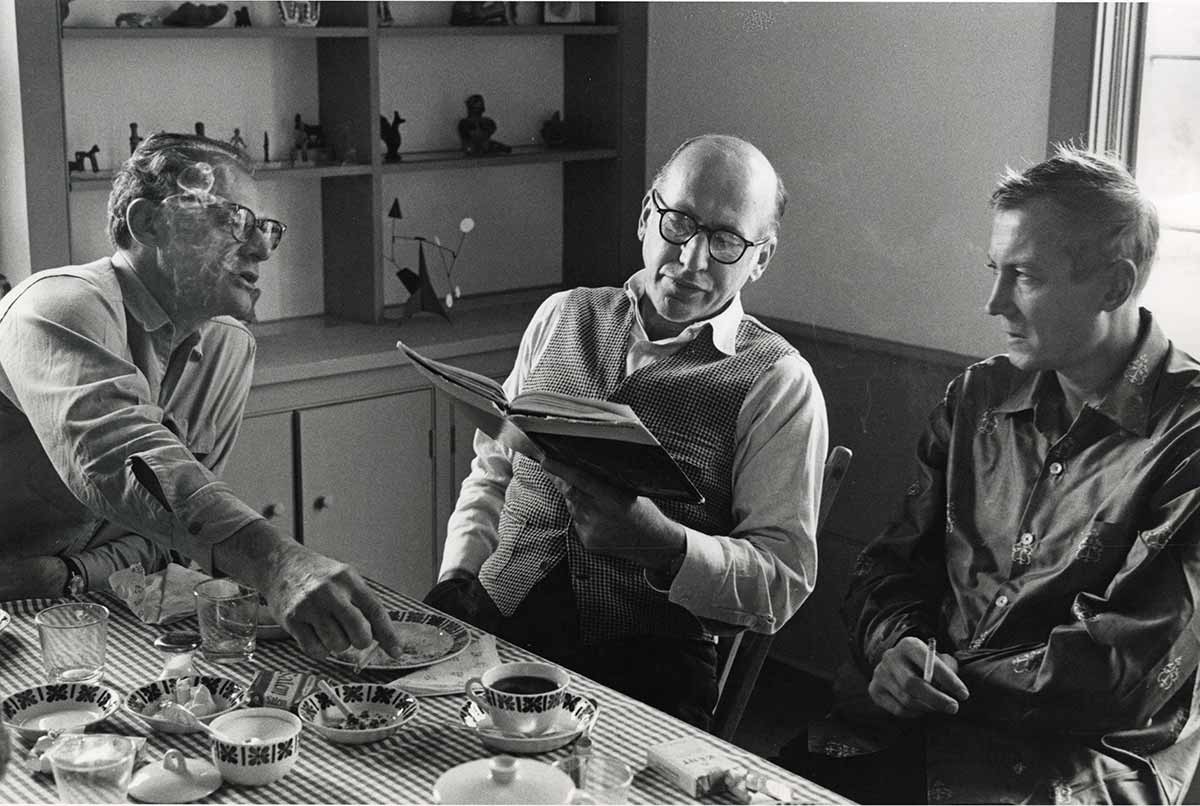
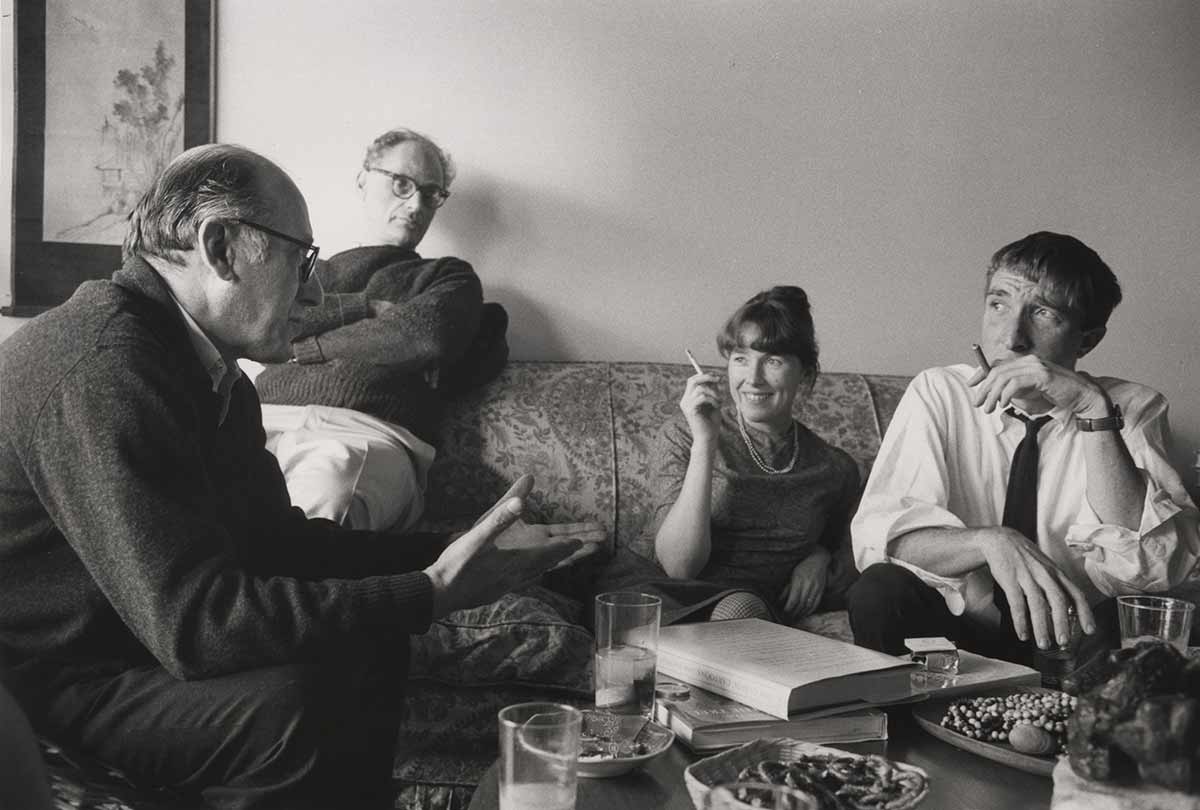
November 29-December 24, “Saul Steinberg: Recent Work,” exhibition at the Betty Parsons and Sidney Janis galleries, New York; his aversion to exhibitions makes this the first New York show since 1952.
1967
January-April, first artist-in-residence at the Smithsonian Institution. “I spent perhaps the strangest three months of my life. It was as though I’d emigrated to a place where normally no one emigrates.” Official Washington social life and government bureaucracy irritated him. “It was against this world that the hippie revolution of nudity, and especially of violence, took place.”
During these months, he makes drawings on Smithsonian stationery, adding imagery that recontextualizes the steel-engraved buildings on the letterhead. For a luncheon in his honor on February 27, he prepares two pages of “Remarks” in his false calligraphy, undercutting what he perceived as the pomposity of the event.
![Two drawings on Smithsonian Institution stationery, 1967. Ink on paper, 10 ½ x 8 in. Washington, DC, Smithsonian American Art Museum; Gift of the artist. (1967. Smithsonian 1974.14.31 [1] and 1967.Smithsonian 1974.14.13](https://saulsteinbergfoundation.org/wp-content/uploads/2016/09/Smithsonian-1974.14.13-1-sm.webp)
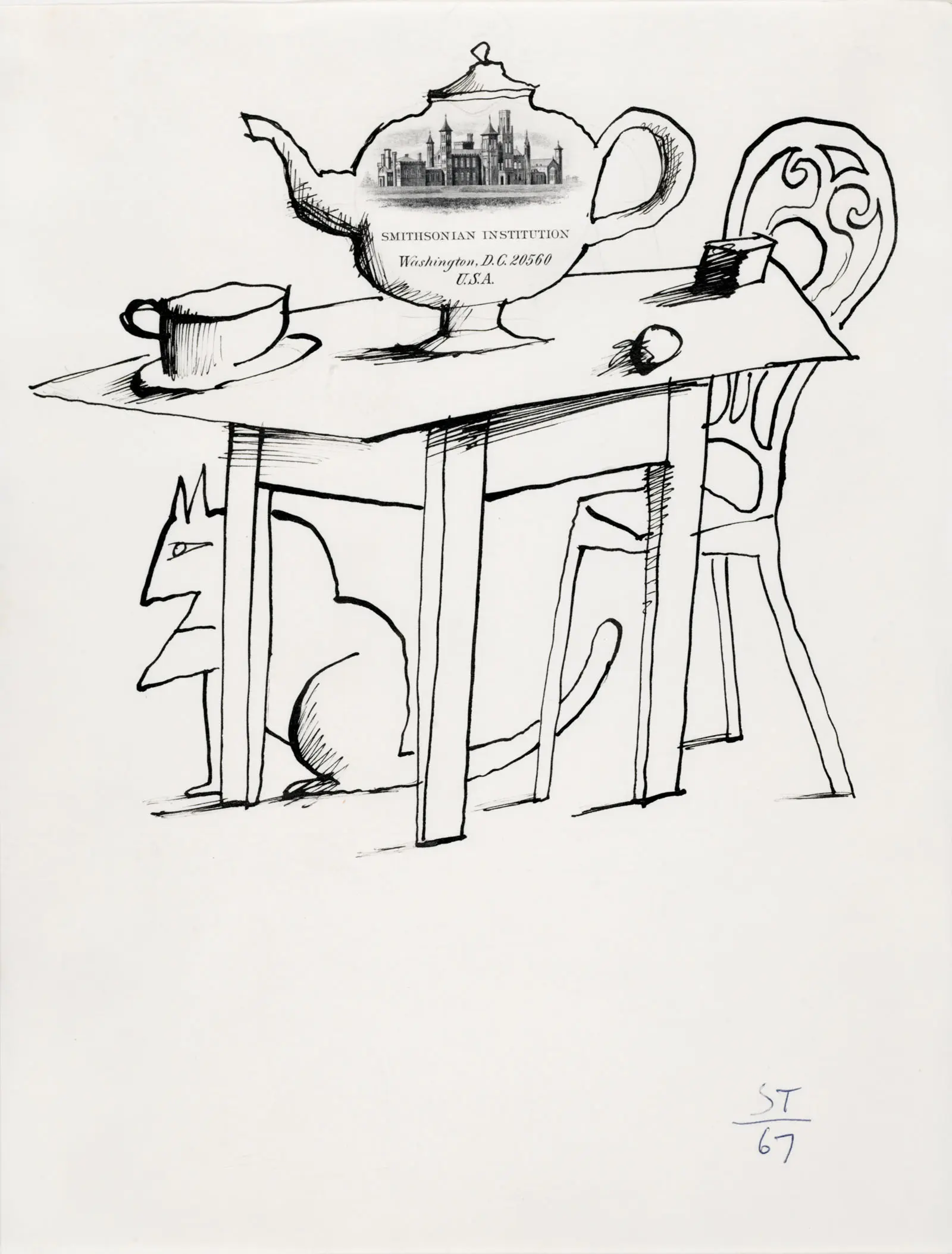
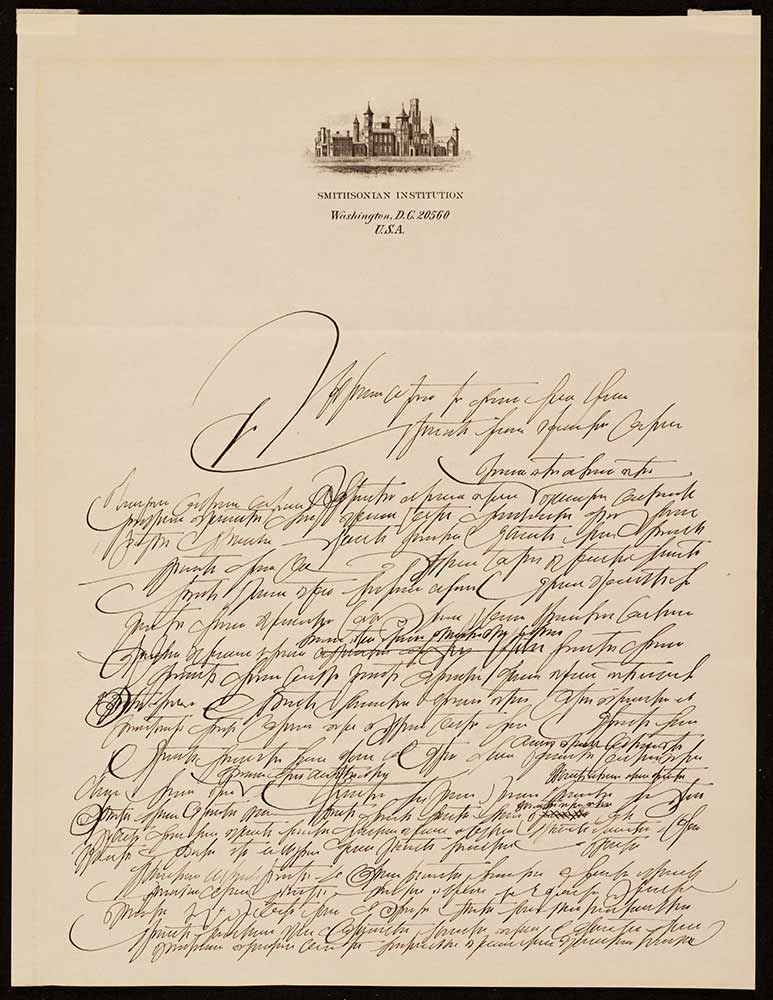
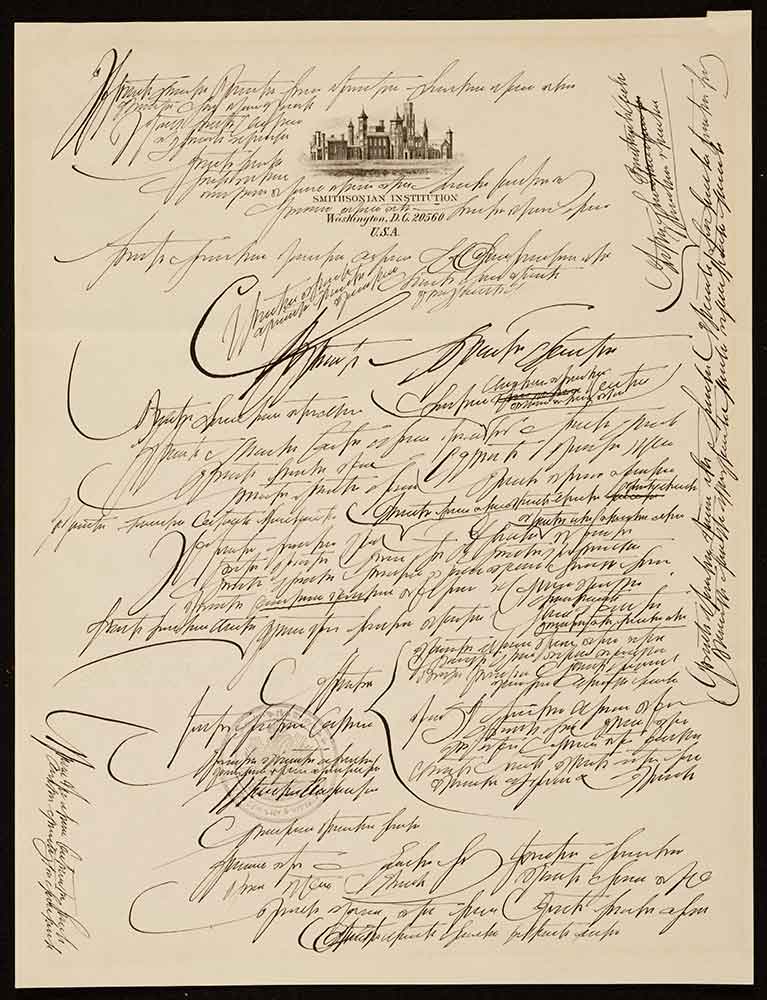
While in Washington, makes four drawings for backdrops for a Seattle Opera Company traveling production of Igor Stravinsky’s camera opera, The Soldier’s Tale. He supervises the enlargement of the drawings.
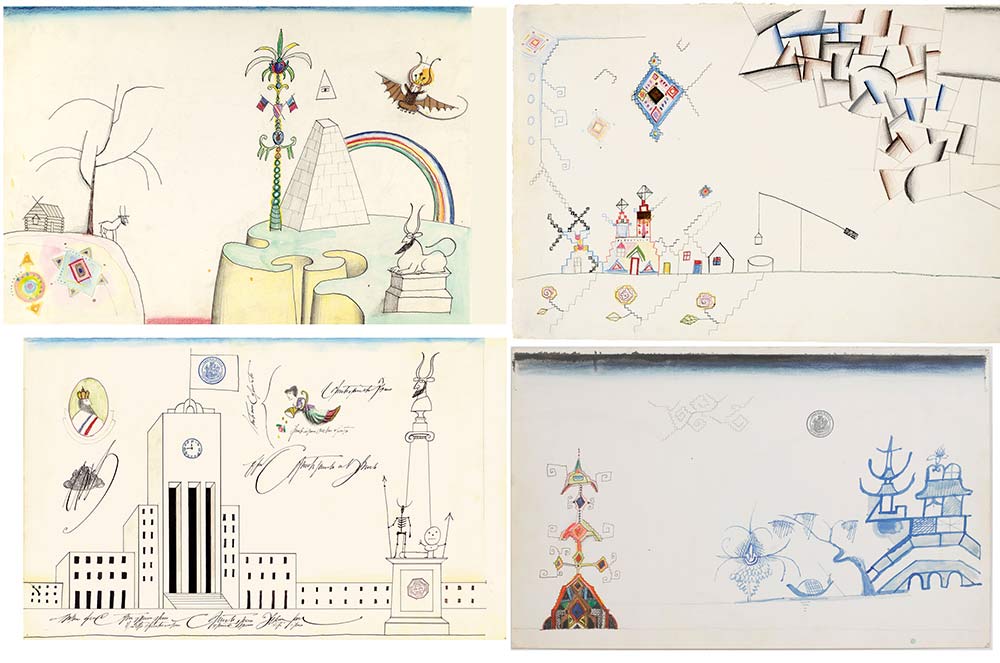
March 10-April 30, “Steinberg: ‘The Americans.’ Aquarelles, Dessins et Collages 1955–1967” at the Musées royaux des Beaux-Arts de Belgique, Brussels. Six of the eight monumental panels from The Americans, his collage-murals for the 1958 US Pavilion at the Brussels World’s Fair, are reassembled and exhibited along with nearly 50 drawings of the previous decade. Two of the panels accompany the show when it travels to the Museum Boymans-van-Beuningen in Rotterdam and the Hamburger Kunsthalle.
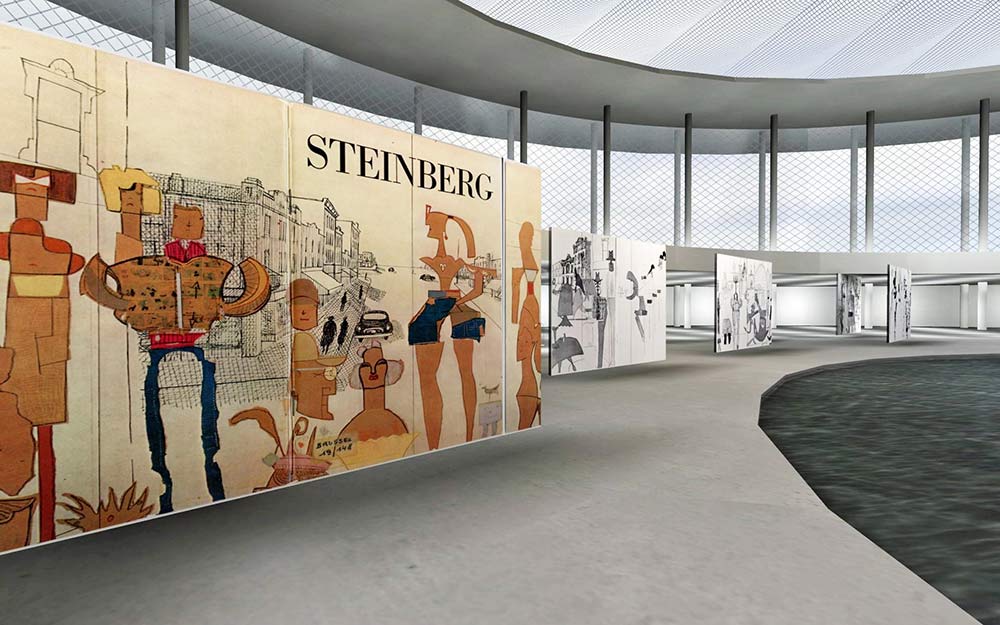
Contributes 27 drawings to My Search for Absolutes, the posthumously published credo of philosopher-theologian Paul Tillich.

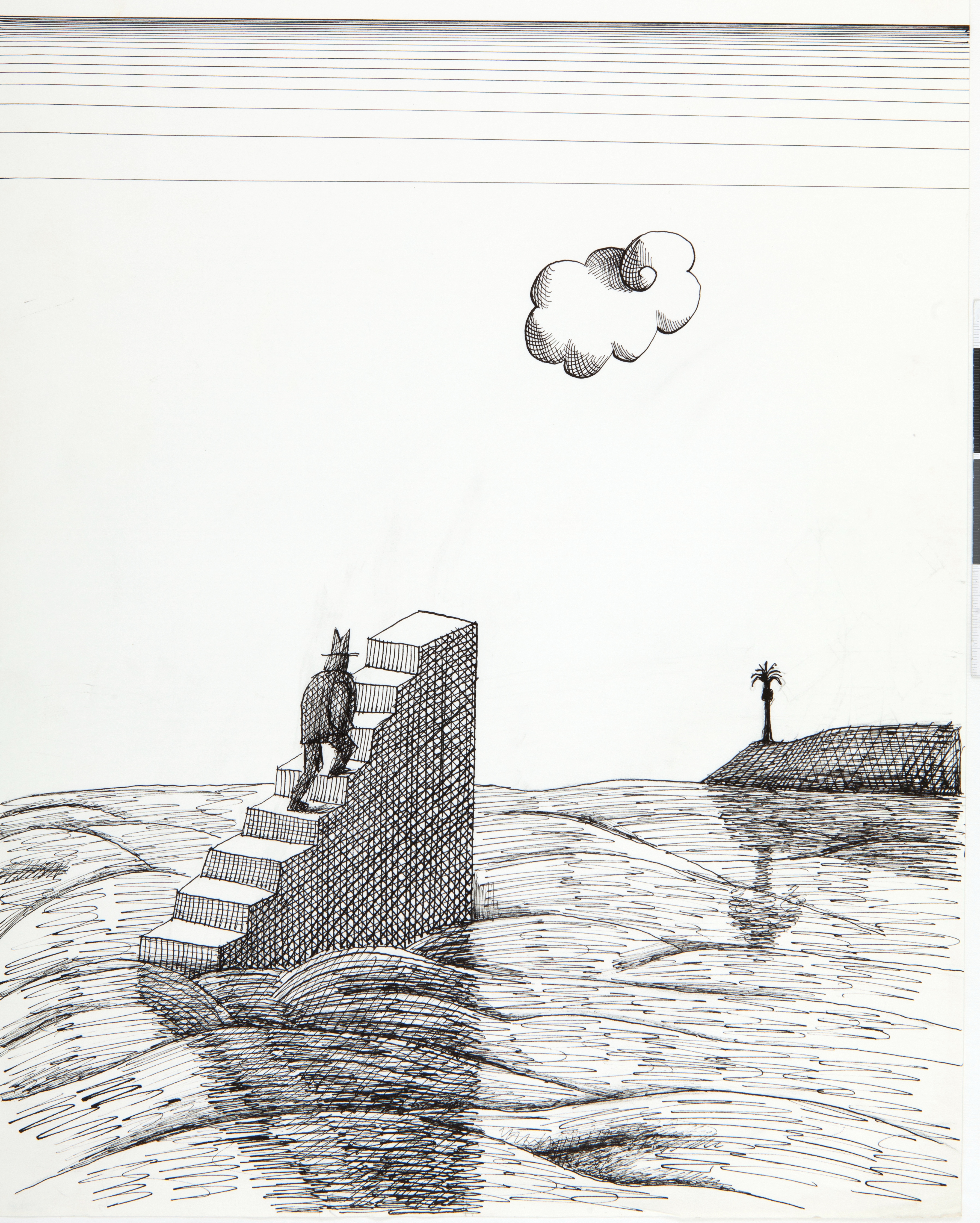
August 3, purchases three more lots to extend his Amagansett property.
August 12-30, with Sigrid, trip to California, Washington, Wyoming, Idaho, Montana, North Dakota, and Minnesota.
August 30, death of Ad Reinhardt, who had become a close friend.
Incontro con Saul Steinberg: L’essenza totemica (Encounter with Saul Steinberg: The Totemic Character), a film made for Italian television (RAI), with ST interviewed by Sergio Zavoli. Film is shot in his Washington Square Village apartment.
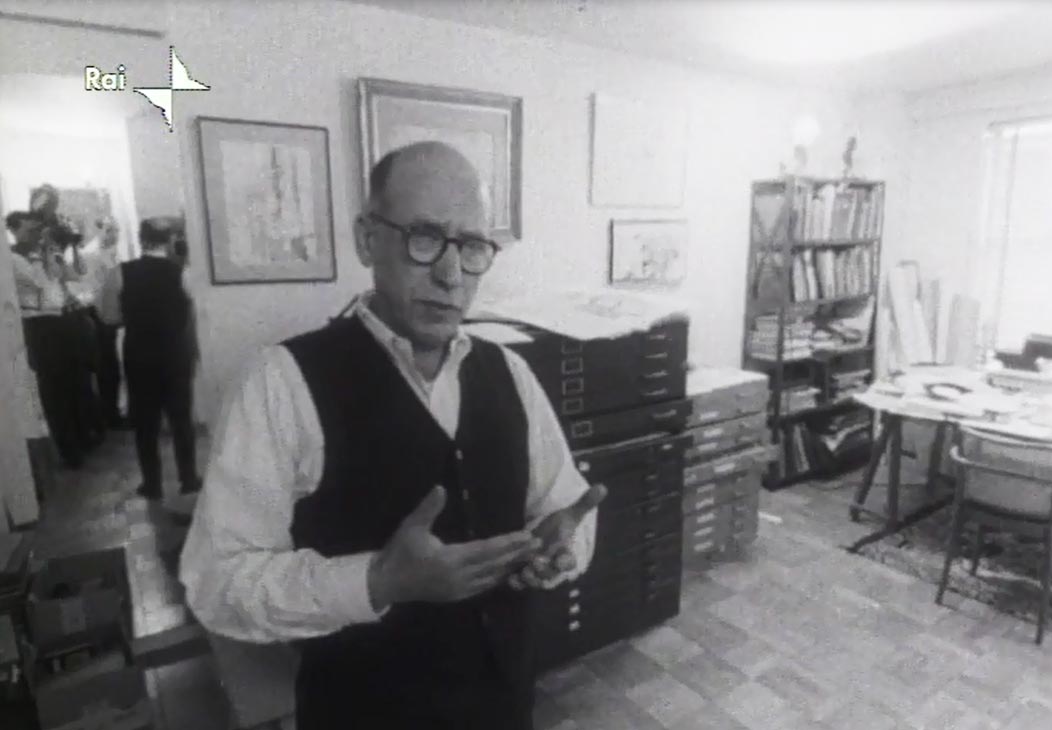
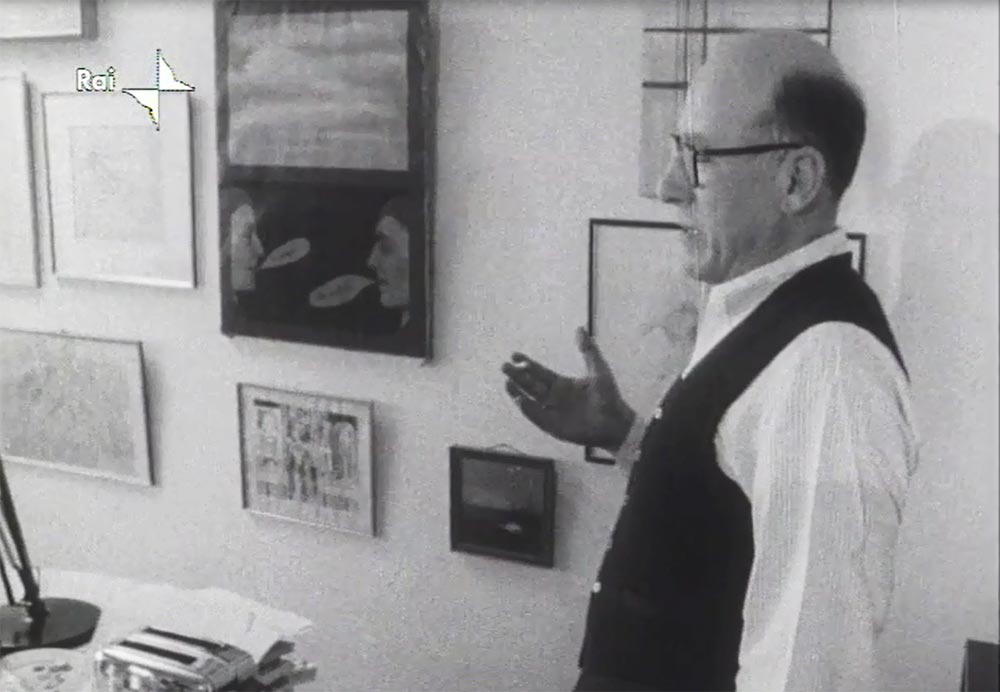
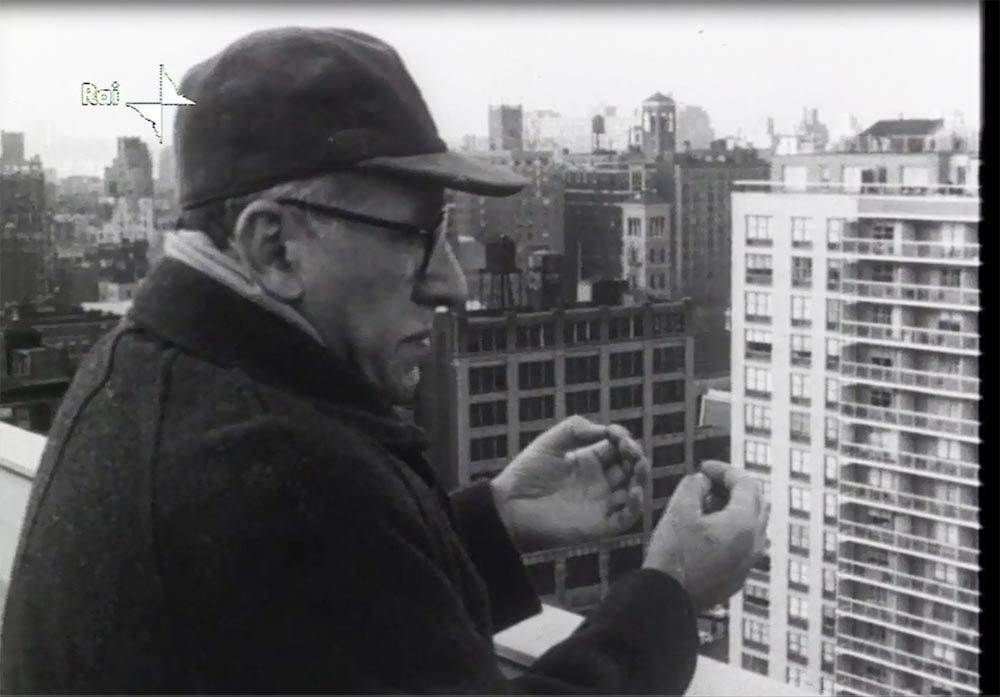
As his opposition to the Vietnam war grows, contributes a lithograph entitled Thirteen Colonies, or Vietnam, to Portfolio 9—lithographs by nine artists sold to raise money for anti-war campaigns. Will continue to donate art and design posters for anti-war efforts.
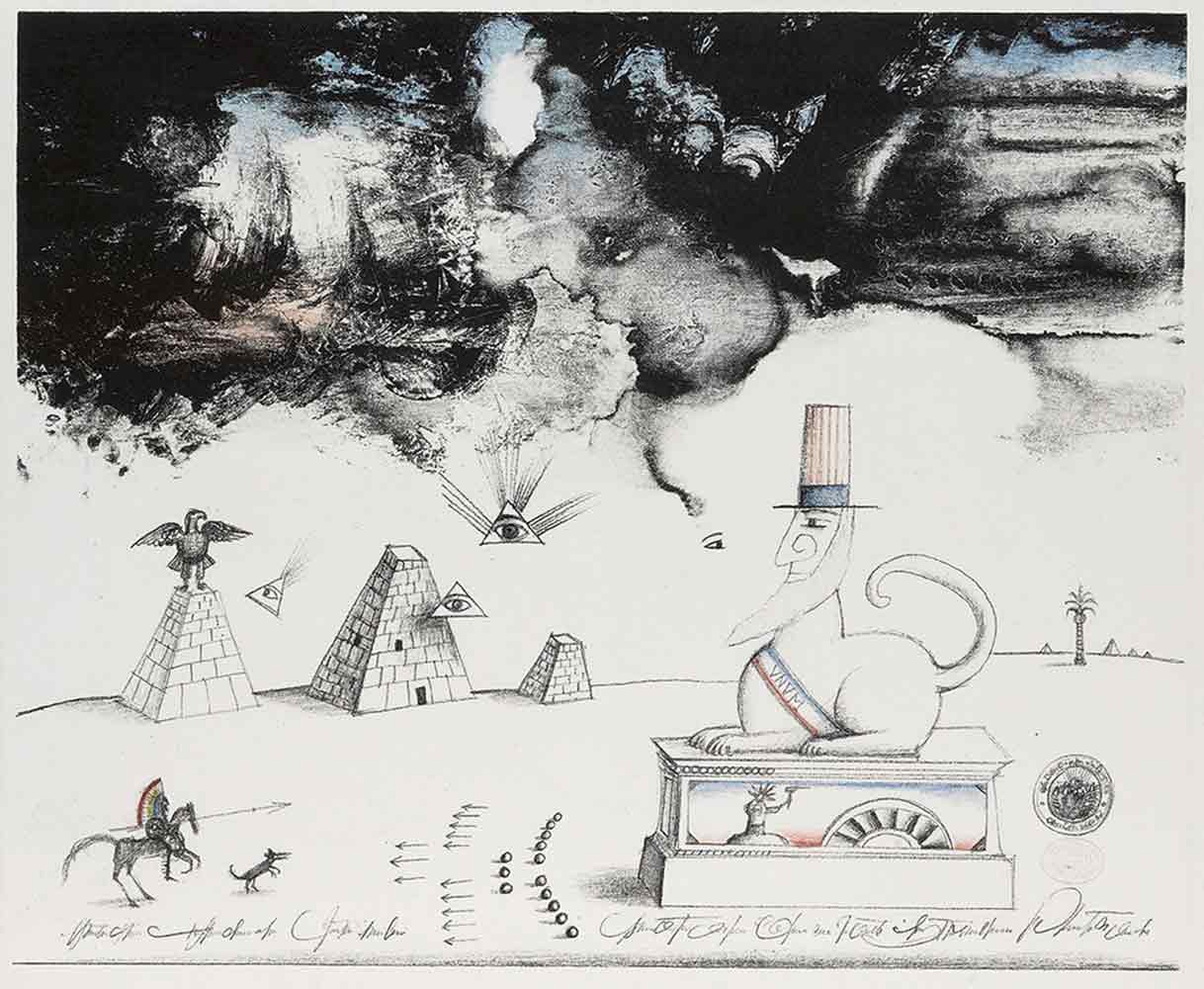
1968
January, first TV broadcast of ST interview with Adrienne Clarkson for the Canadian Broadcasting Company program Take 30 in New York.
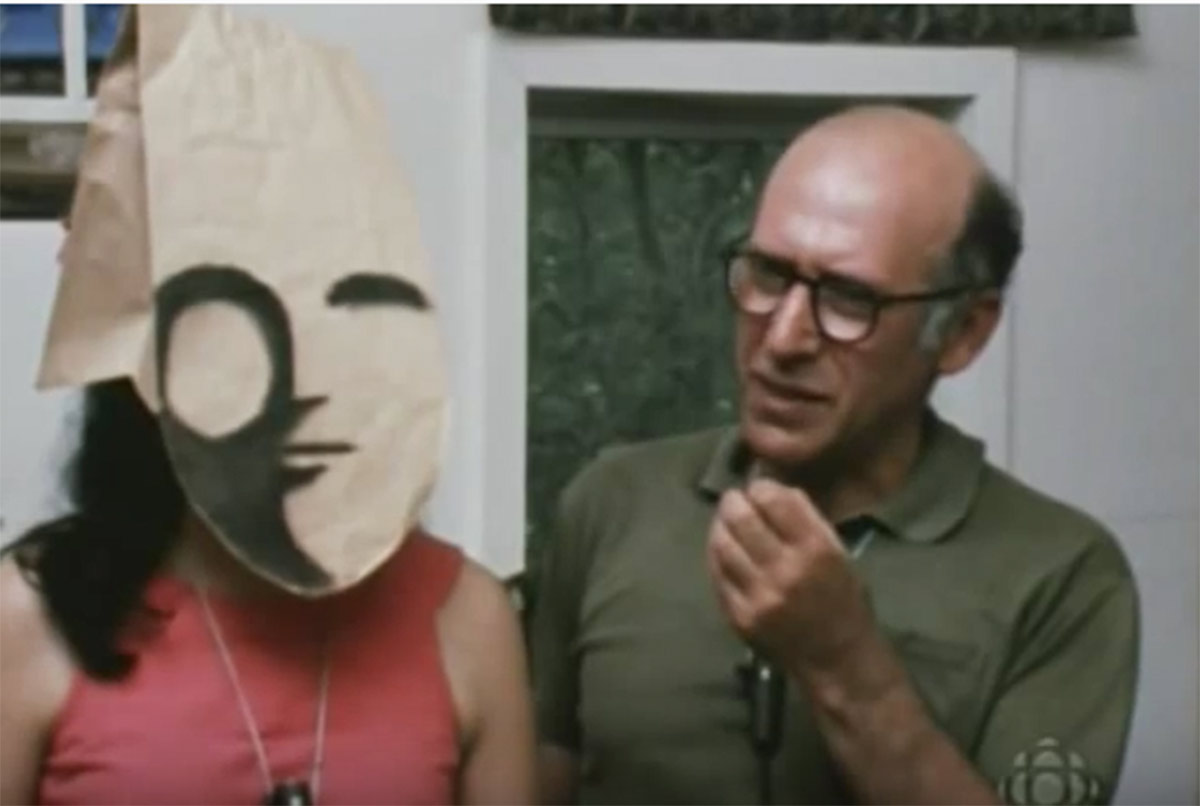
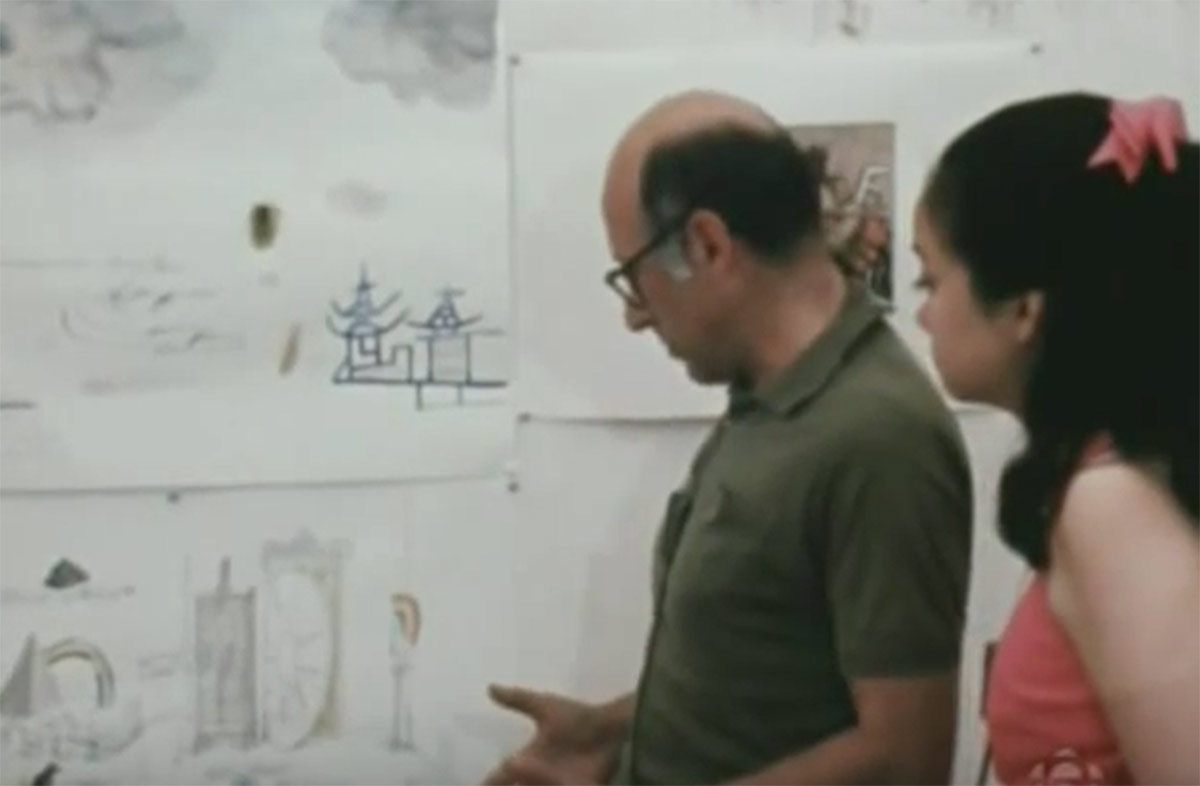
February 5-21, trip to Mexico with Sigrid. Visits Mexico City, Puebla, Oaxaca, Merida, and other places; finds both beauty and “horrible” tourist attractions.
April, in Paris, where Aldo Buzzi joins him; then meets Sigrid in Trier, Germany, her hometown. “Then a detour to London” and (May) “back to Paris… in time for a dose of tear gas” during the student riots.
May 28, inducted into the National Institute of Arts and Letters, along with Josef Albers, Louise Nevelson, and Mark Rothko.
September, leases entire eleventh floor of 33 Union Square West as studio space; lease runs from September 1, 1968-August 31, 1975. Andy Warhol’s Factory is three floors below. Will continue to use this as a studio until 1973, when he purchases an apartment on the Upper East Side.
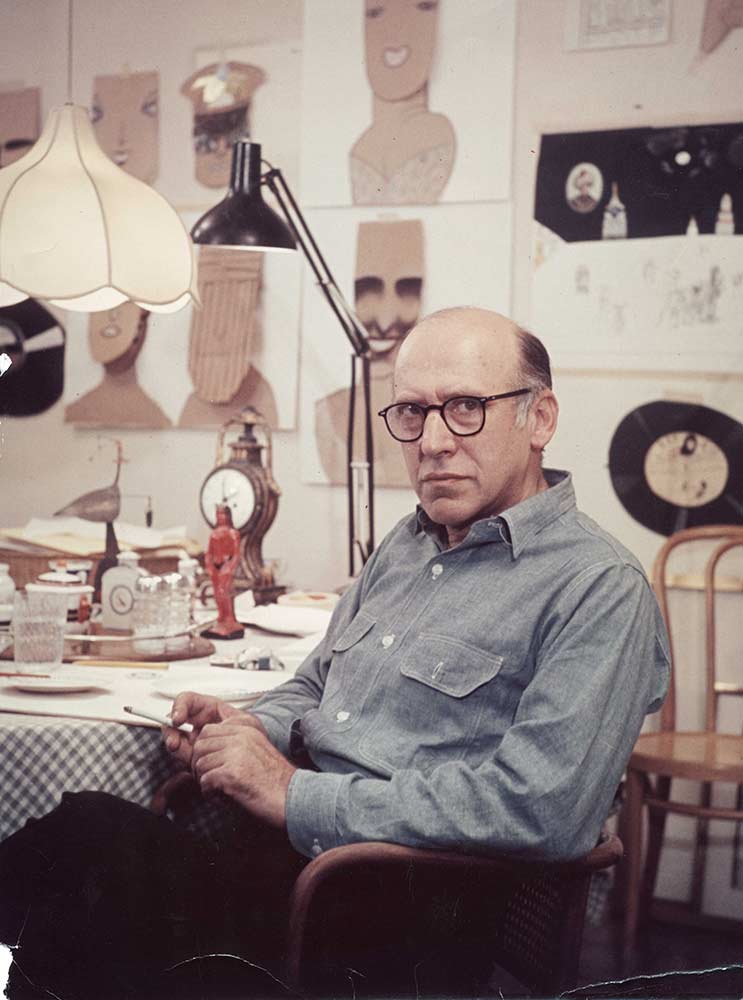
December, exhibition at the Museo de Bellas Artes, Caracas, “Steinberg: Dibujos y Acuareles.”
Begins reading underground comix, which will henceforth exert an influence on his work in the creation of urban terrorist figures.
TV film by Rolf Karrer-Kharberg, Das Maskenhafte an Saul Steinberg: Bericht aus der Welt eines groβen Zeichner (The Masked Guises of Saul Steinberg: Report from the World of a Great Draftsman), Südwestrundfunk; airs 1969. Based on 1967 interviews with ST.
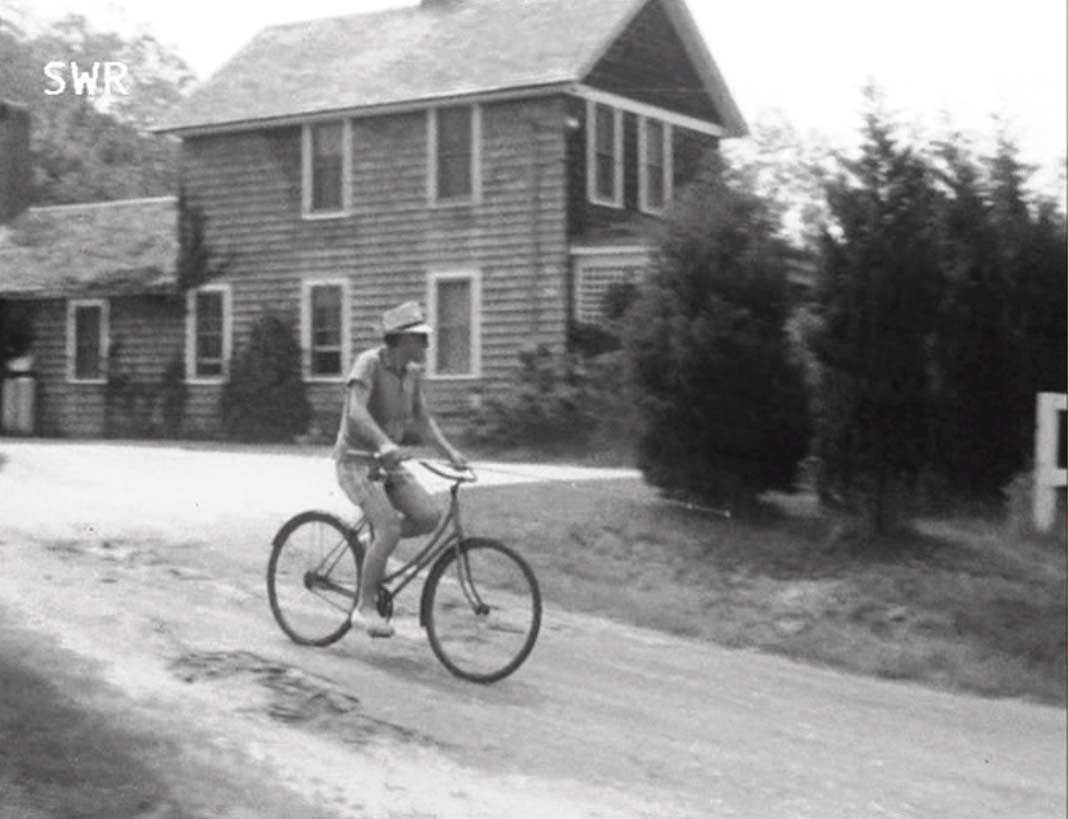
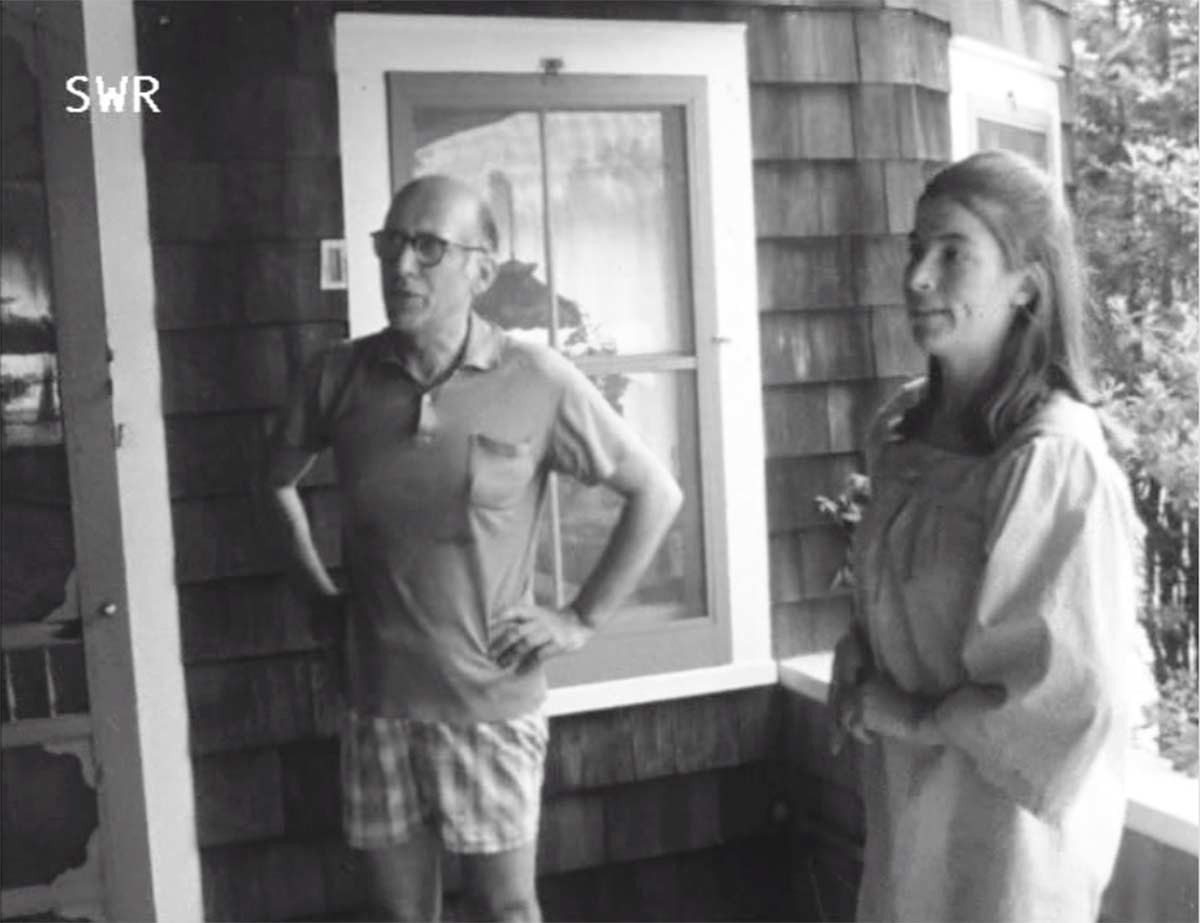
1969
Artist Anton van Dalen, a recent immigrant from the Netherlands, becomes his studio assistant. Until ST’s death, “Saint Anthony” will do everything from packing works to taking research photographs.
August, sister Lica visits him in Amagansett.
October, purchases additional lots on the Amagansett property and begins plans to add a studio. He now owns 7 acres.

November 5-29, third solo show at the Parsons and Janis galleries, New York, focuses on his new works comprised almost entirely of rubber stamps.
Artists and War, a rubber-stamp drawing of this year, is a condemnation of the Vietnam War as a disaster for culture.
